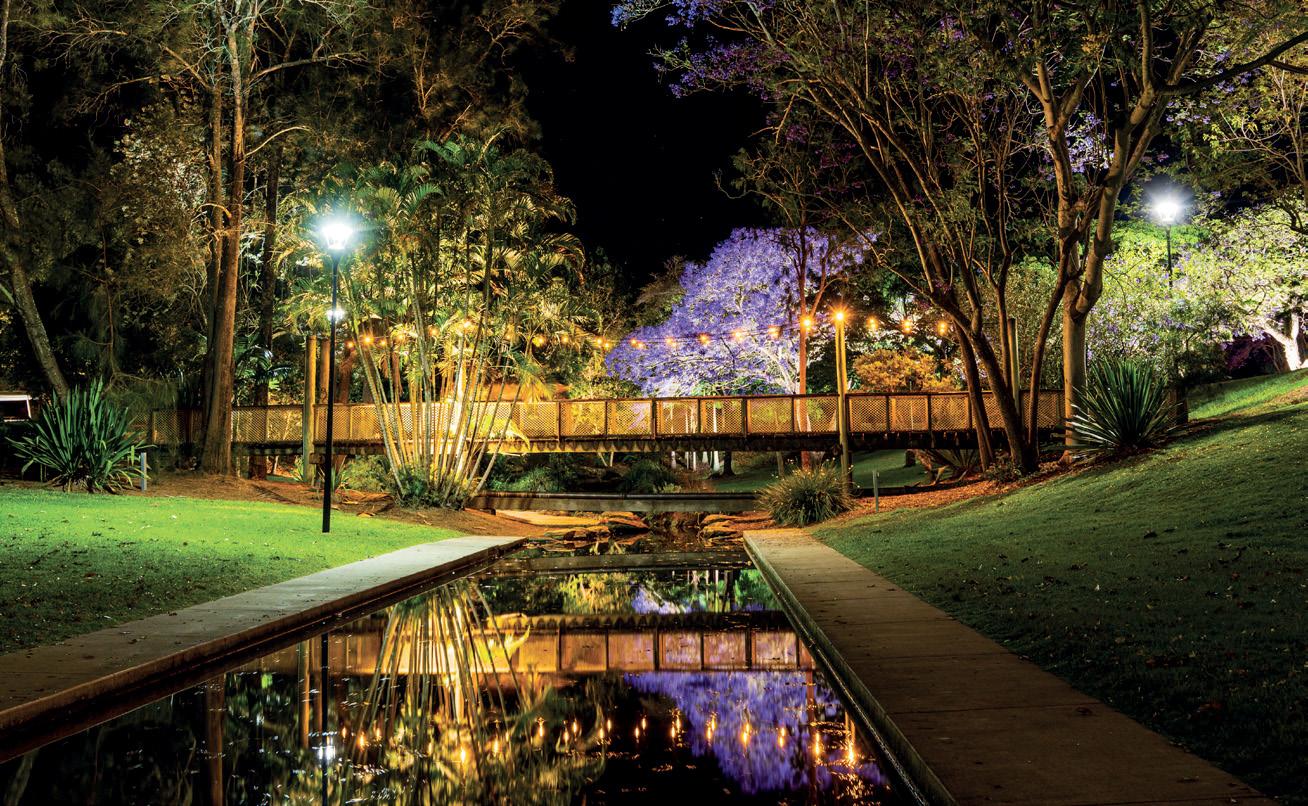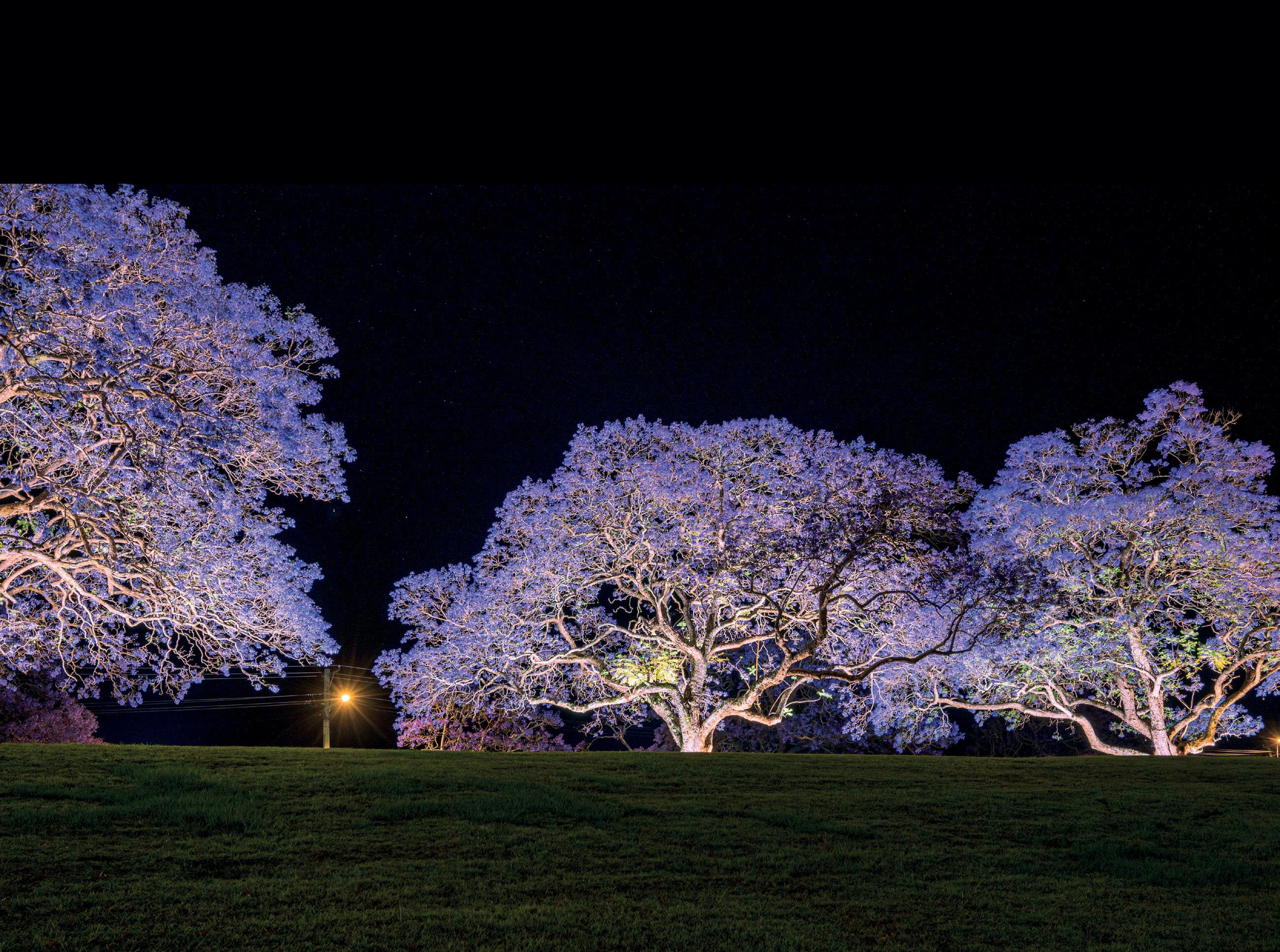REDISCOVER PRINCE STREET
SPECIAL FEATURE INFRASTRUCTURE ON THE MOVE





This issue is packed full of stories from the Clarence, identified by the five themes from our Community Strategic Plan Leadership, Economy, Infrastructure, Environment , and Society.
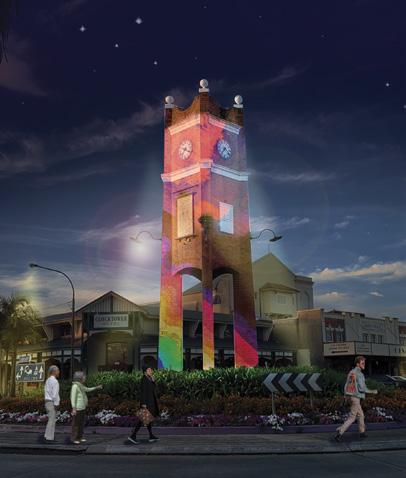
Message From the Mayor
Message From the General Manager
Community Engagement Schedule
New Call Centre To Improve Customer Satisfaction
Long Term Community Advocate Retires
Healthy Harold
Rediscover Prince Street in Grafton

Grafton Regional Gallery
Road Safety: a Top Priority
On Call 24/7 to Maintain Your Water Supply
Using Drones to Inform the Community
Flood Recovery
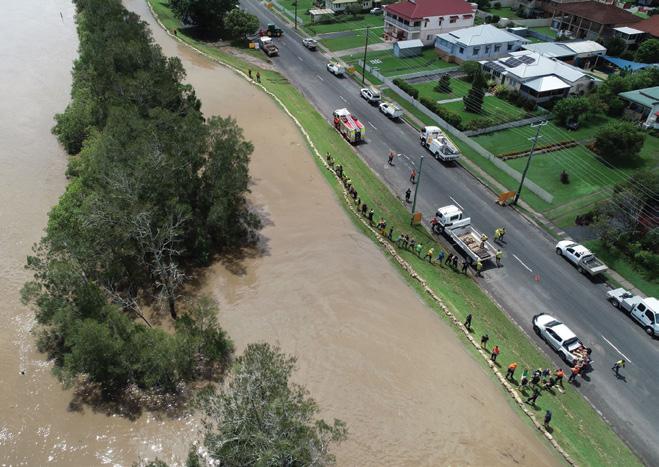
Disaster Recovery
Roads: Fixing Country Bridges
Developing Infrastructure Valley-Wide
Methane Flare
Live Sustainably at the Clarence Elf
Saving our Species at Shannon Creek Dam
Protecting the Emus
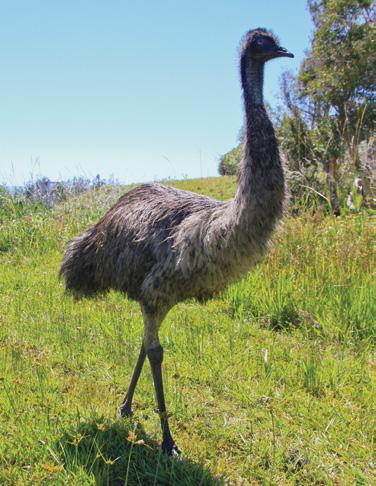
Weeds Officers Recognised for Lifelong Efforts
Council’s Emergency Management Coordinator
Making the Clarence More Resilient
Building Resilience Through Physical Fitness
More Hands Make Light Work
Tourism Team Promotes Clarence Valley
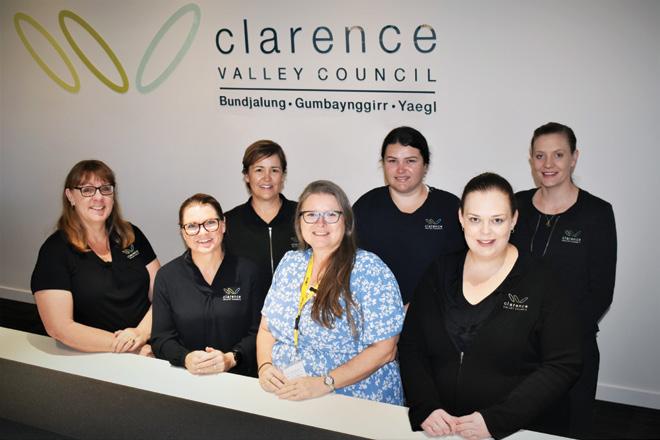
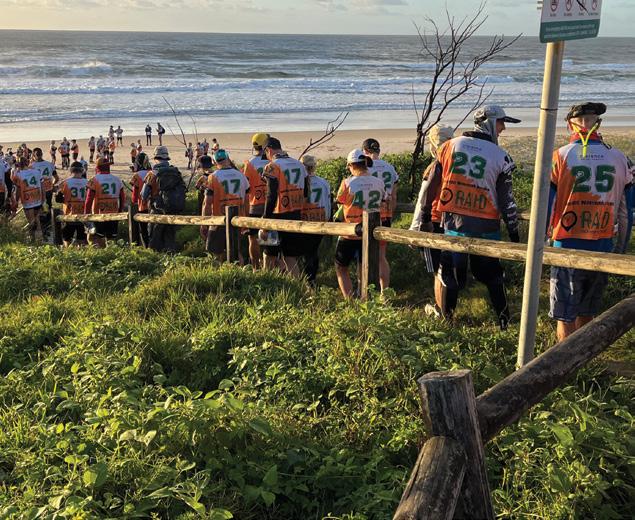
The Gallery Store: Beyond Souvenirs
Clarence Valley Events
Illuminate See Park
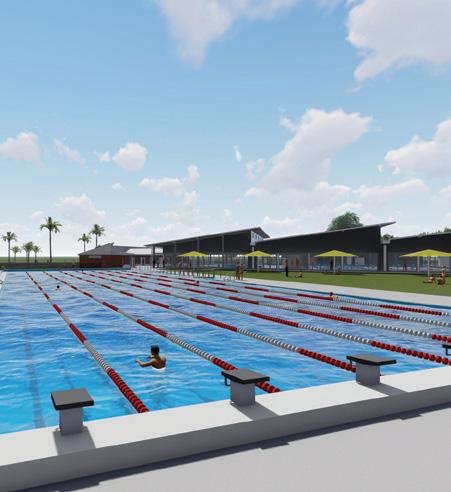
I am pleased to provide this message as the introduction of a new Clarence Valley Council initiative and mechanism, through which we will strive to improve and increase engagement and information flow to our community.
Late last year, during the Council election campaign, candidates acknowledged that the Council could and should do much better in informing the community on the variety of matters of importance to you.
We have each received complaints of a lack of communication and response times to your letters and emails. We are committed to continuous improvement in this regard. If you have experienced issues, I encourage you to contact me or your local councillor.
My elected colleagues and I do understand the vitality of effective community consultation and engagement. We have embraced a number of new approaches and will continue to do so.
Early this year Councillors met with community members over a “cuppa” and visited about a dozen communities while consulting over the 2022-23 Council Operational Plan and Budget.
When elected, I instigated regular Mayoral radio interviews on each of our three local radio stations and immediately after each monthly Council meeting, I speak to Council decisions on radio.
The Council has supported a Mayoral Minute to reconstitute the former “Councillor Listening Tours” which, when I was previously the mayor, provided excellent opportunities to meet with and listen, particularly in the more remote villages and localities in the Council area. Planning for such tours is well advanced and will recommence probably in October 2022.
There are in excess of 30 hard to reach communities. The plan at this stage is to visit usually three communities each month. On that basis, or unless we can increase the frequency of visits it will take at least a year to come to all Clarence communities.
With senior Council staff, for the past several weeks I have been visiting elders, First Nation communities, Traditional Owners groups with the primary objective of re-establishing, direct contact with Council on their issues of concern. A report thereon will soon come to Council. It is likely that several different means of connection and engagement will be appropriate.
I conclude by reiterating that Council and the governing body is committed to continuing improvement in the way we communicate with you. This magazine is another mechanism to achieve this goal.
Ian Tiley Cr Ian Tiley Mayor
We acknowledge the Bundjalung, Gumbaynggirr and Yaegl people as the Traditional Owners of the land on which we live and work. We honour the First Nations peoples culture and connection to land, sea and community. We pay our respects to their Elders past, present and emerging.

Welcome to the launch of our quarterly magazine ‘Clarence Magazine’ and the first of many great reads to come.
Whenever we are out and about in community, we’re asked ‘what is Council doing?’ or told ‘we didn’t know about that’. It’s fair to say we have lots of news to tell and lots of stories to share but we’re not so good at telling while we are so busy delivering.
Local Government is incredibly diverse, we cover so many areas and deliver a broad range of services and while there are few residents who use all of the services we provide and attend all functions we host or support, there isn’t a resident among us who does not access any.
Whether your interest is in arts and culture activities and facilities, learning and development and capacity building programs, the quality of our drinking water, waste and sustainability services, active and passive recreation facilities and opportunities, accessing information for visitors, a safe road network, disaster recovery activities, beach safety, programs that safeguard our unique biodiversity and natural resources, estuary and coastline management plans, proposed upgrades to the sewer network, community participation opportunities, major capital and grant funded project status, land use planning proposals, partnership projects we are involved in, opportunities to participate in community or information about how to do business with us, over the coming quarters and years ‘Clarence Magazine’ is the answer. Sure you can read our annual Operational Plan to see what we will be doing and get a snap shot of what we’ve achieved, but it is ‘Clarence Magazine’ that tells the full story.
Over the life of the magazine you’ll also meet our staff and gain an appreciation for how they contribute to delivering services to the community and we’ll tell you more about some of the important work we are doing to deliver quality services more efficiently.
Of course, we can’t fit everything we do in a 44 page magazine, so you’ll have to come back each quarter and grab the next instalment. We hope you enjoy the read.
This quarter, meet Tammy. Tammy is the backbone of our Customer Service Team and after 15 years with the organisation if Tammy doesn’t know about it then it probably isn’t worth knowing about. This makes her the best person to lead our customer service team to
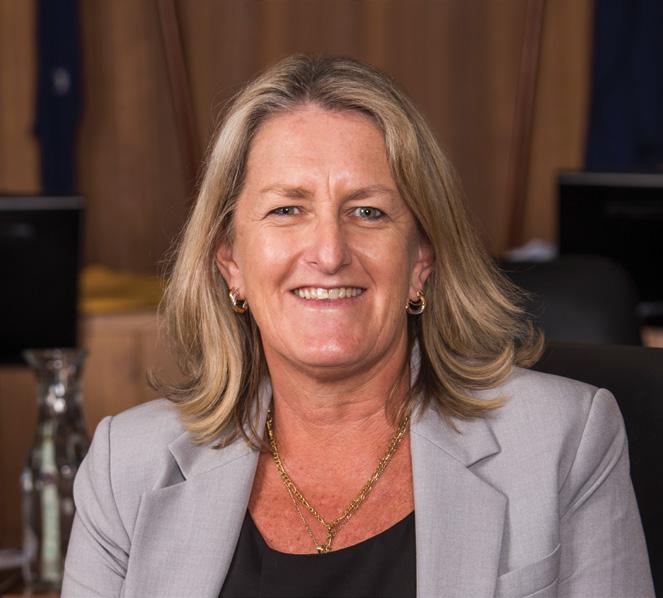
increase their knowledge about the organisation to better service your enquiries.
Much of the past few months has been spent delivering recovery works following the February/March storm events and we have been working closely with Transport NSW to not just replace what was lost but to embed betterment in our infrastructure. Of course that means it is taking us longer to get around our road network and we will be at it for a while yet. Rest assured though, it is our intention to build back better where we can and make the most of the State government funds available to us.
Investing in the future is something we’ve been focused on in recent years and another example of that is employment of a Road Safety Officer to progress pedestrian and transport safety initiatives. All over the urban landscape you will start to see pedestrian footpaths being constructed, increasing safety and improving our active transport network.
Clarence Valley Council is one of the Valley’s most active investors in activities facilitated by community groups. With an annual commitment of over $200,000, we are proud of our involvement in supporting community to deliver through donation and sponsorship programs. You can see some of this in action in this edition of the magazine. It is also pleasing to see delivery of some exciting capital grant funded programs like Yamba skatepark and the timber bridge replacement program across the Valley, progress with the Grafton Waterfront and plans for Prince Street Grafton and the Clarence Valley Cultural and Community Precinct in Maclean coming to fruition.
As you can see there’s lots to read about this quarter, and we’ve barely touched the surface of what we’d like to tell you. Clarence Valley Council is a busy place to work in these exciting times with so many opportunities to deliver outcomes for our community.
We hope you enjoy the read and if there are topics you’d like to read about in future feel free to let us know.
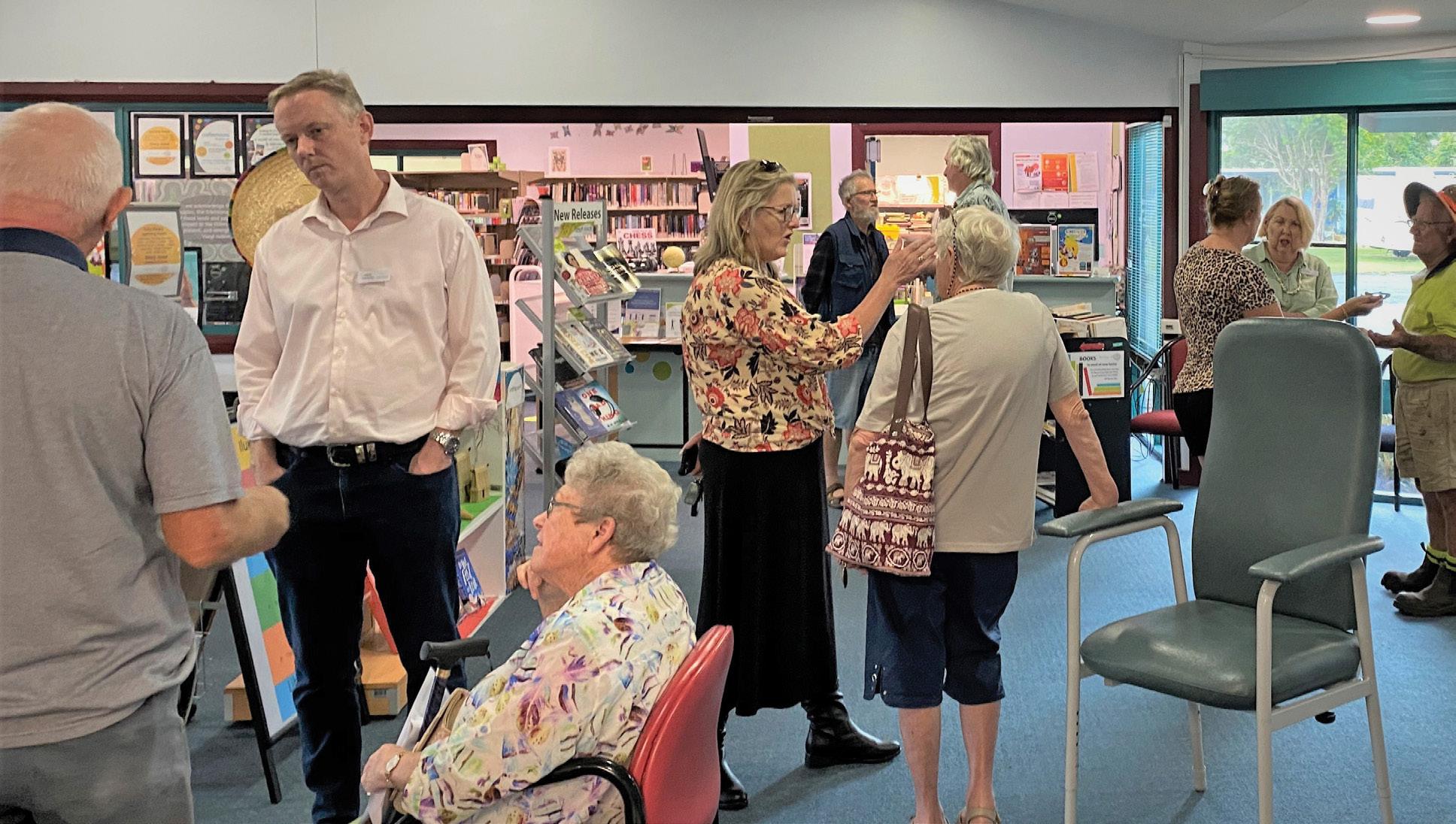
‘The Clarence 2032’ is your ten-year plan, prepared by us based on what you told us is important. It identifies your aspirations and priorities for the future of the Valley. It creates the vision we are working toward.
Through online surveys, council drop-in days across the Clarence Valley, feedback from social media, letters and general discussions in the community, we’ve worked out where we are as a community and what we want moving forward. This magazine is one way we will demonstrate our actions based on the aspirations in The Clarence 2032 and report on achievements in our Operation Plan.
You can check out The Clarence 2032 and our other strategic documents on our webpage www.clarence.nsw.gov.au/Council/Our-performance
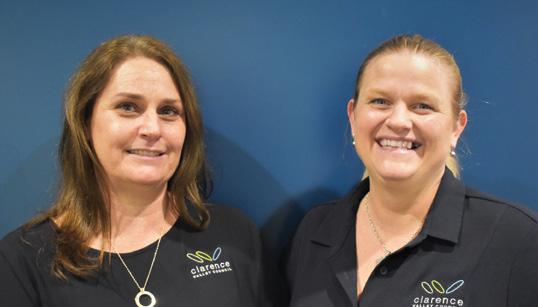
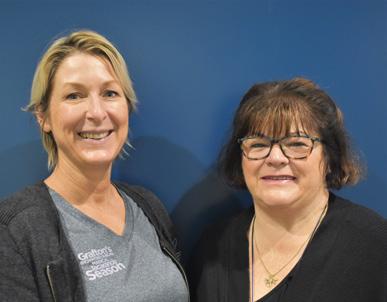
at Clarence Valley Council was installed on 29 August 2022,
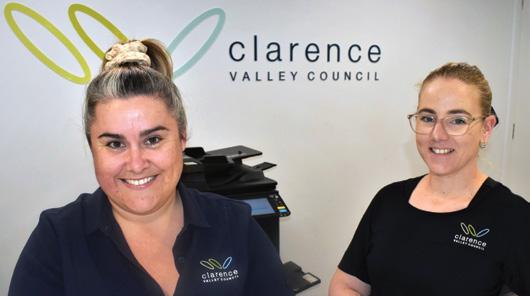

the
when calling customer service on (02) 6643 0200.
providing options to direct enquiries to the appropriate customer service officer.
Callers are now greeted by an
The
to
each type of
to
team members greatly enhances the training, support and development
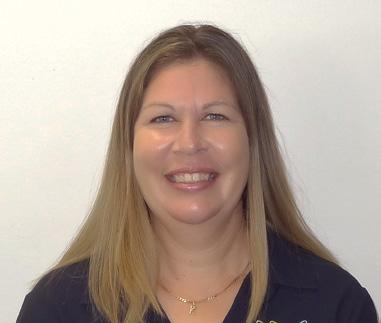
of Customer Service. This is expected to allow better interactions with the community and increase
with first
The
callers.
for new staff and supervisors.
Callers are greeted with options to direct the enquiry to the most appropriate staff member:
• Press 1 for Waste
• Press 2 for Building Enquiries
• Press 3 for Rates
• Press 4 for General Enquiries
When callers are on-hold they will hear the following message:
“You can expect that we will treat you courteously and with respect; please treat us the same way. Council does not accept abusive or threatening behaviour, and we may end the call if you behave this way.”
That there is a live chat tool on Clarence Valley Council’s website?
Simply click on the Live Chat speech bubble in the bottom right-hand corner of the Clarence Valley Council website to begin your conversation with a Customer Service Officer.

Q: How long have you worked at Clarence Valley Council?
TC: I started here in 2006. Before that I was a stay-at-home mum. I worked in council at Armidale and Uralla before I was a mum, so I have always had a local government background in customer service.
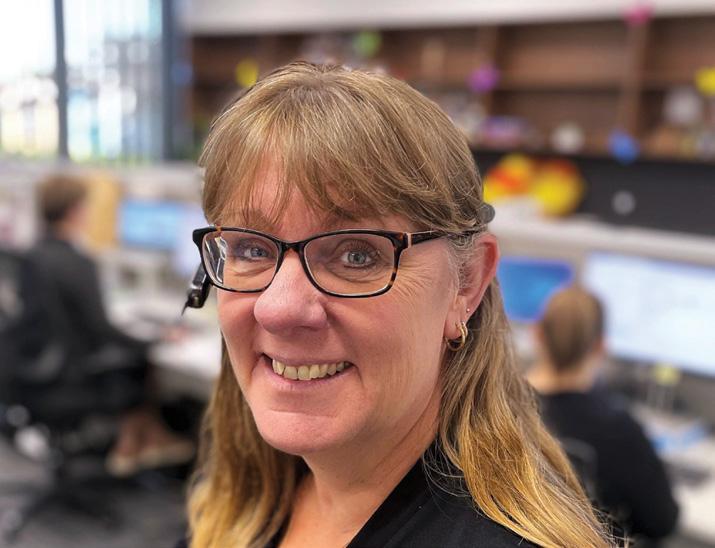
Q: What are the biggest changes to customer service over that time?
TC: Being a one-stop shop and able to answer all the questions at first point of contact; no longer just cashiering and front counters. In the past you just put the call through to someone from that department and wouldn’t deal with it any longer. Now staff have lots of understanding and knowledge and can answer customer enquires straight up. A big change and improved feature is live chat. It was my suggestion. I really love live chat and I think it works very well. I use live chat on other websites all the time. It’s the best. We also have specialist positions in the Customer Service Team. I was the Customer Service Officer – Planning and updated my knowledge in this area. We have customer services staff now specilising in planning, rates, requests for information and GIPA.
TC: You will see it on the bottom of our webpage, and you type in your name and email and staff get a notification and we start chatting online to the customer. It’s quick
Tammy Carr has been working at council for more than 15 years and was the first to suggest introducing Live Chat to Council’s suite of customer service options.
and efficient. If we can’t answer your question live on the chat, your details and inquiry is emailed to us and we always follow up and get back to you.
Q: The Council has just updated its customer contact centre. How will this improve outcomes for customers?
TC: I love it. I think it gives more power back to the customer because they can request a call back, which is working well. It holds your place in the queue, and they can leave a message, so we know what it’s about before we call them. We can also update messages to the community and customers in real time, so if there is an emergency situation, we can update our message when anyone calls.
Q: Do you think the new system is user friendly?
TC: The new system should make it easier to speak with a customer service officer. When the call is first answered you will hear a recorded message, then you are given choices for the area you want to contact so the call can be answered by the correct person. For example, you press 1 for waste inquires and if you are following up on a missed bin you will be put straight through to JR Richards. Remember you can also contact us by email or live chat.
Q: What are the most common Customer Service calls?
TC: At the moment it’s road issues
and potholes. When rates go out there are a lot of rates calls.
Q: What are some of the things people routinely call Council about that are redirected?
TC: Services NSW is the big one, about flood rebates and help. The same thing happened with the fires. When elections are on, we are always referring people to the electoral commission; Bpoint for people wanting to make payments for rates and water; and bins of course.
Q: Council has gone digital in recent years with its communications, DA processes and the like. How has that impacted the community?
TC: We still get people coming in with all their paperwork, so we help them lodge, help create logins, and get all their paperwork sorted. It’s all electronic, it’s the way of the future, and for those who aren’t tech savvy we are here to help them. We are always trying to improve our services
Q: Why do you like working for Council?
TC: I love helping the customers, and I love my work family. Some of the friendships I have developed over the last 15 years have been with my work family, and I wouldn’t have those friendships if I hadn’t worked here. It is an amazing customer service team, and such a privilege to work with this team every day.
Images opp page left (L-R): Customer service team Tammy Carr, Heidi Green, Amanda O’Range, Coordinator Lynette Burley, Melanie Chard, Rebecca Gibbins and Peta Elks. Images opp. page right: Ashleigh Thompson and Madeleine Rake, Kym Clifton, Shona Muller and Jane Neville, Nicole Kelso and Tracie Woods.
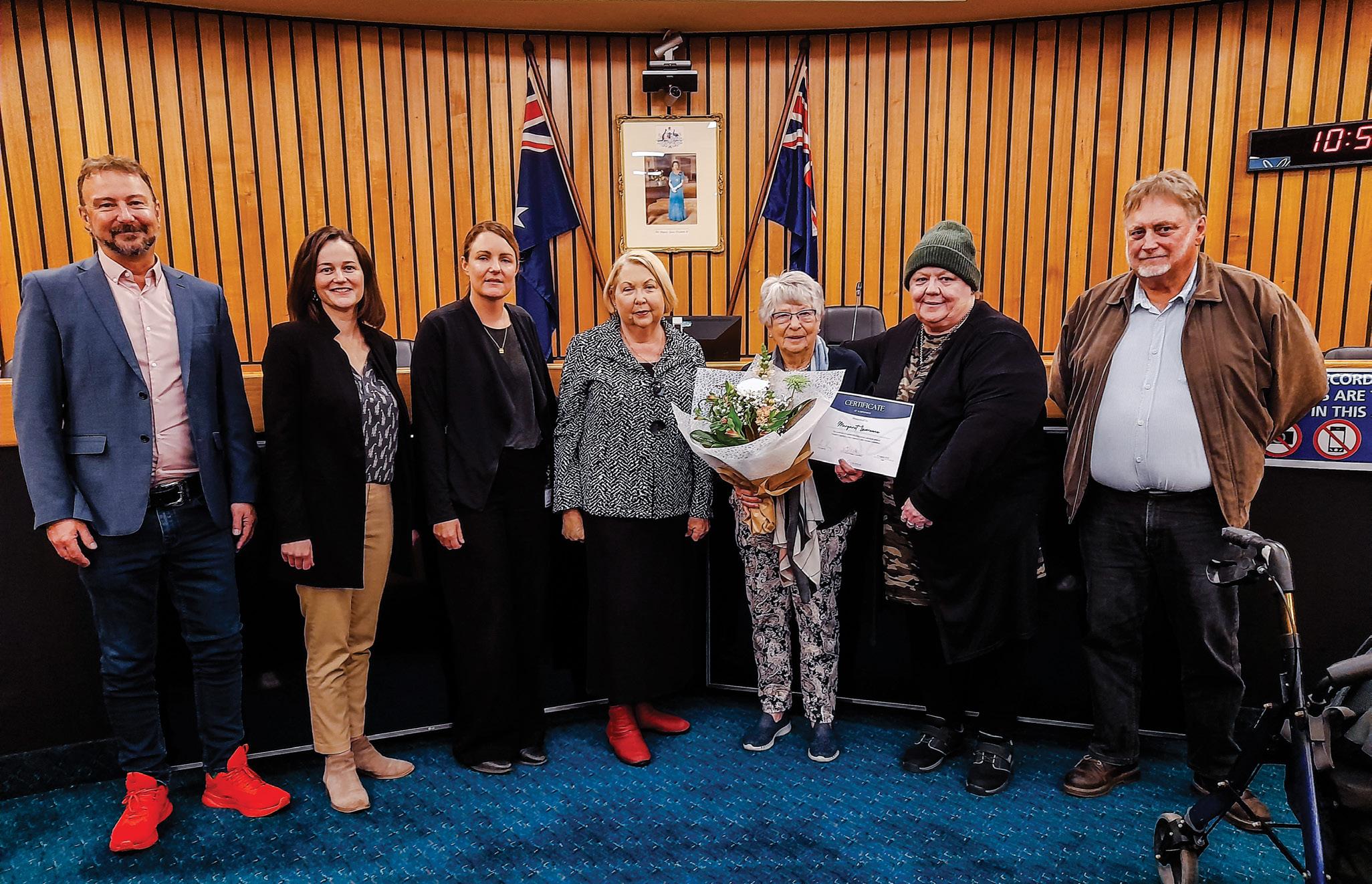
Margaret Lawrence spoke about her delight in being part of the committee and her greatest achievements while on the committee.
The Clarence Valley resident said she joined the access committee after witnessing people playing bridge who couldn’t hear the announcers.
“From past experience I was aware of hearing loops and those sorts of things,” she said.
“So I thought, I’m going to do something about hearing loss. It’s a disability and people weren’t aware of it.”
Through lobbying from the Access Committee, Council budgeted $30,000 to install hearing loops into Council’s chambers, offices, and community centres.
“It was a lot of money to secure and it wasn’t easy to do, but we did it,” Mrs Lawrence said.
The access committee also encouraged the Saraton Theatre and Catholic Church to install hearing loops.
Other achievements Margaret Lawrence was proud of in her decade on the access committee included the White Cane Days and the Missed Business Booklet.
Council has 11 advisory committees:
• Clarence Coast and Estuary Management
• Clarence Valley Sports Advisory Committee
• Lower Clarence Sports Advisory Committee
• Clarence Valley Access Advisory Committee
• Clarence Community and Cultural Advisory Committee
• Clarence Valley Community Climate Change Advisory Committee
• Grafton Saleyards Advisory Committee
• Floodplain Risk Management Advisory Committee
• Economic Development and Tourism Advisory Committee
• Water Efficiency Working Group
• Biodiversity Advisory Committee
IT WAS A LOT OF MONEY TO SECURE AND IT WASN’T EASY TO DO, BUT WE DID IT
Clarence Valley Council is proud to support Life Ed’s mission to get back into schools after the pandemic and deliver Healthy Harold’s preventative health and mental wellbeing program in the region.
The nation’s hardest working giraffe, Healthy Harold, educates young students with practical life lessons delivered in an engaging and captivating way. Using the latest research, the age-specific program empowers children to make healthier choices, covering topics from cyber safety, the human body and emotional wellbeing to personal safety and drugs and alcohol.
Mayor Ian Tiley witnessed first-hand what a valuable educational resource Healthy Harold is for school-aged students when he visited Year One at Clarence Valley Anglican School.
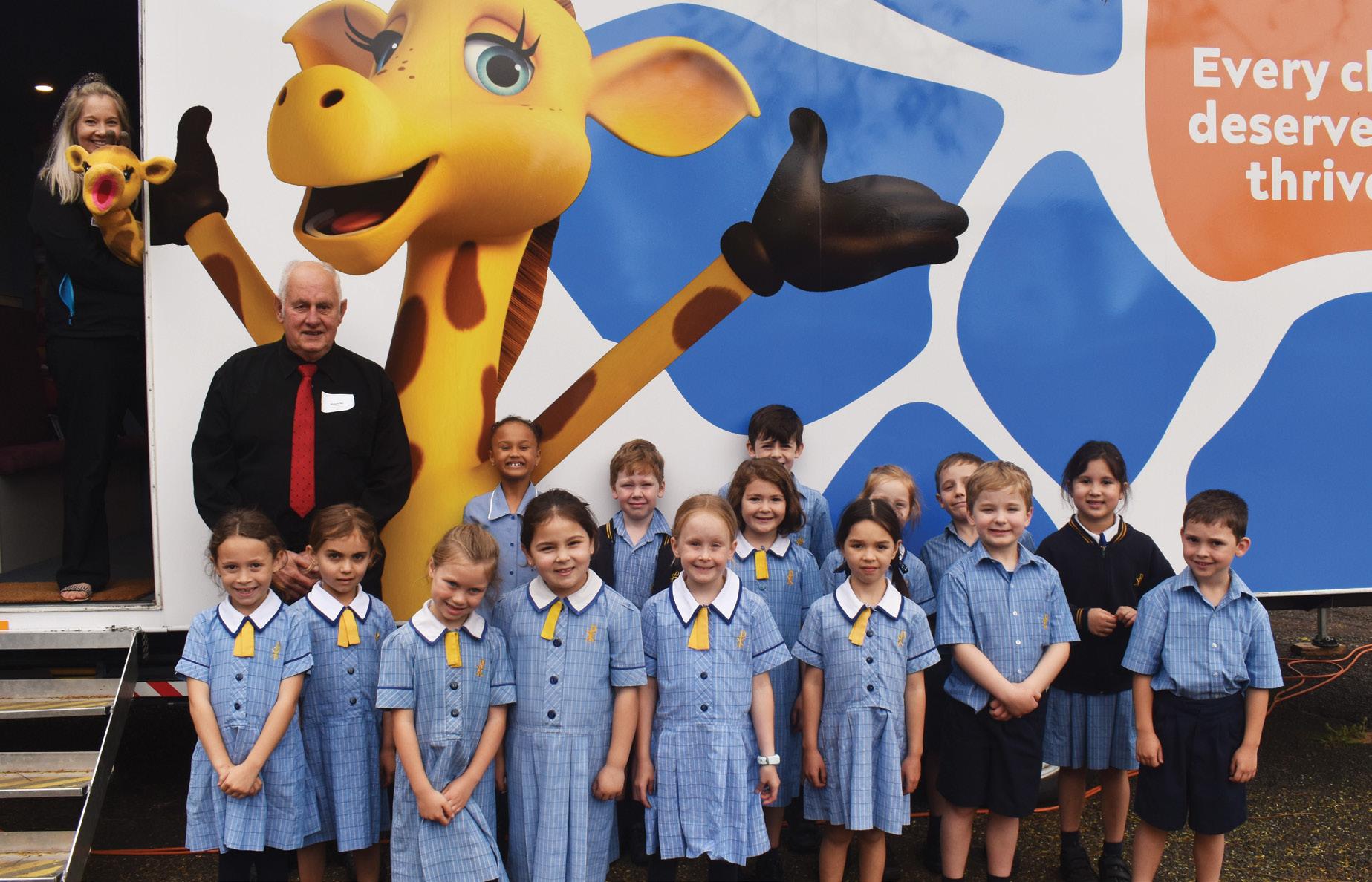
“The messages conveyed was most insightful and useful, and to say the children were very engaged would be an understatement,” Mayor Tiley said. “Healthy Harold is most entertaining for these kids.”
Clarence Valley Council supports Life Ed annually with $6,000 assistance to move Life Ed’s Mobile Learning Centre between schools. In the last 12 months Council assistance has allowed 1,179 children in 12 schools in the Clarence Valley LGA to receive a visit from Healthy Harold.
“Positive lifestyle choices contribute to the improved wellbeing of young people and have a progressive flow-on impact on families and communities,” Chief Executive Officer Life Ed NSW/ACT Jonathon Peatfield said. “Life Ed’s program equips students with the ability to make positive choices and the skills to overcome challenges that impact happiness and long-term life trajectory.”
Life Ed’s accredited Educators facilitate 90-minute NSW curriculum-aligned modules to schools utilising five unique and innovative methods - mobile learning centres, pop-up classrooms, in-class delivery and the new virtual and online modules.
“Mental wellbeing education is more essential than ever as young people adapt and recover after Covid-19.”
“The pandemic has presented ongoing challenges for communities, schools and our organisation. There are heightened levels of distress for students, families and teachers, which we account for in our health education –particularly mental health content,” Mr Peatfield said.
Assisting Life Ed is just one of the many ways Clarence Valley Council is proactive in providing support, services and facilities for the betterment of our local community.
We’re aiming to make Prince Street and the Grafton CBD a more enjoyable and comfortable space for all people in the community.
Over the coming summer, Council will trial wider footpaths, colourful landscaping and more seating to encourage more people to spend more time in the CBD. We’re also delivering more lighting, artwork and activities spread over the whole summer.
The project is fully funded by a grant from the State Government as part of the successful Streets as Shared Spaces program. This is an economic recovery initiative to bring more people Grafton’s CBD, to support local businesses and to re-connect our community.
This trial is an important stepping-stone to implementing the Grafton Precinct Plan which was approved by Council in 2021. It offers the opportunity for Council, state government, local businesses and the community to work together and test out new ideas, develop plans together, hear feedback, and ensure long term permanent changes in Grafton will deliver the best outcomes for everyone.
What will you see?
From November there are a range of changes proposed for Prince Street. You will notice temporarily widening for parts of the footpath in Prince Street, together with planter boxes, landscaping, seating, shade and artwork throughout the street.
Transport for NSW are assisting by funding the replacement of existing pedestrian crossings in Prince Street with new raised platform (wombat) crossings. These crossings will bookend temporary front to kerb
parking for the core area of Prince Street. Improvements to mobility parking spaces and improved accessibility in the street will also be achieved, while retaining parking spaces.
You will also notice decorative lighting along the street as well as a couple of buildings illuminated with local artworks to ‘light up’ Grafton as part of Christmas celebrations. There will be art in the streets and a gnome scavenger hunt for the kids to enjoy!
There will be activities to get involved in. Such as storytelling about our town. You can listen on your device as you walk around town. You can also listen to local Bundjalung, Yaegl and Gumbaynggirr stories, Heritage stories and creative fiction – all offering different perspectives, inviting you to slow down as you walk the streets and notice things you may not have noticed before, and think about our town in a different way. You can follow the art trail and the gnome scavenger hunt. The project encourages shops to open later, so you might like to come out and see the streets lit up while you do some shopping. Keep your eyes peeled for more events over the summer or get involved yourself by contacting Council.
Contribute your ideas to the project on the Rediscover Grafton Clarence Conversations page and keep up to date on the program on Council’s website.
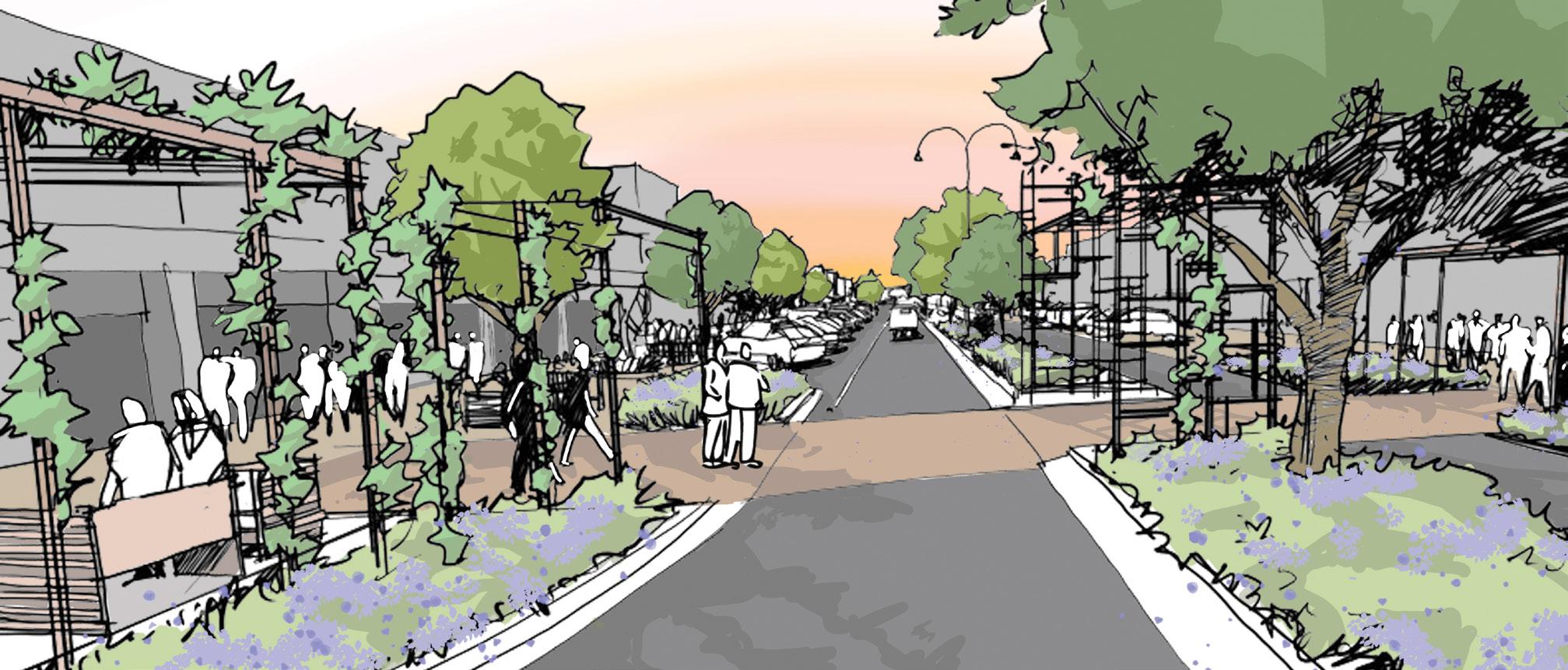
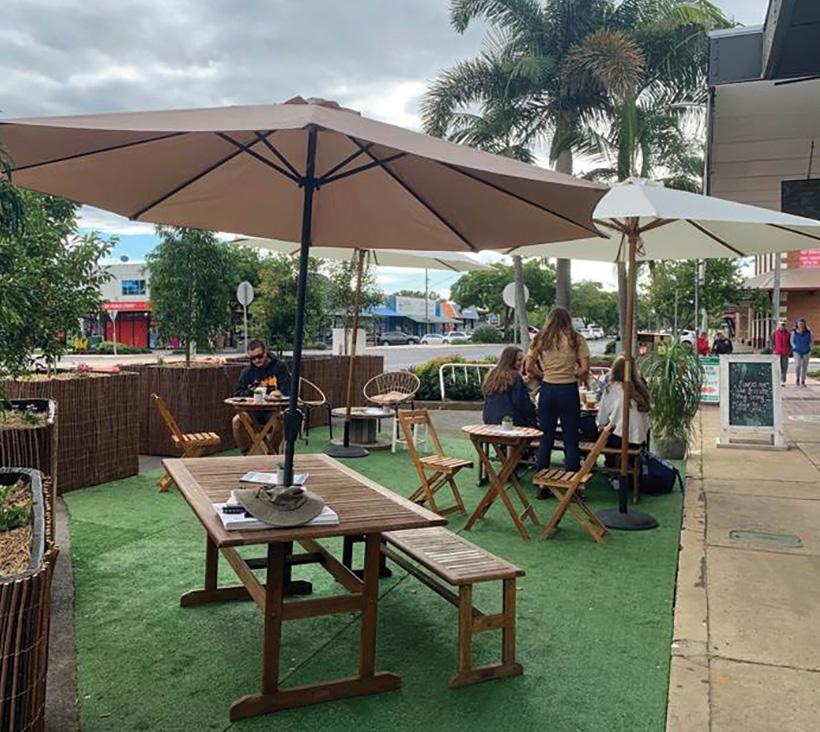
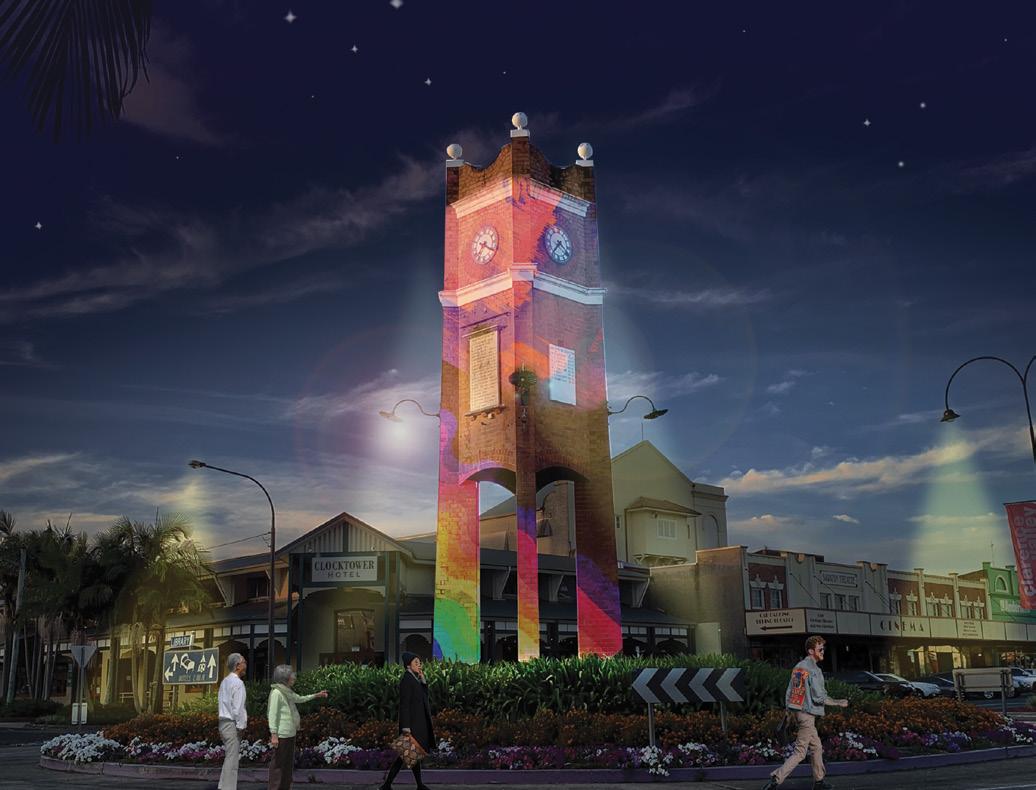

Grafton Regional Gallery holds the largest collection of artworks on the North Coast of NSW with more than 3380 inspiring works. Each year over 35,000 visitors enjoy the newly renovated exhibition spaces, shady courtyard and heritage gardens and buildings. The Gallery was established in 1988 when two artwork collections were donated by the community - the Jacaranda Art Society Collection and the O’Grady Collection. These two founding collections defined the early identity of the gallery which evolved as the Regional Collection and the Jacaranda Acquisitive Drawing Collection developed and other collections were donated. The Grafton Regional Gallery is now a major cultural service of the Clarence and a place for everyone. Artworks that make up the Gallery Collection include some important parts of local and Australian history and can be divided into ten Clarence Valley collections. The collection is showcased in exhibitions curated by the Gallery team and guest curators throughout the year.
Recent acquisitions of artworks include sculptures by Braddon Snape, GW Bott, Ulan Murray and Rachel Burns. The jewel in the Gallery collection are the works acquired through the Jacaranda Acquisitive Drawing Award (JADA) since 1988 - an outstanding collection of contemporary Australian drawings. Over two years the Friends of Grafton Gallery raise the $35,000 that is used to acquire drawings from the award which is Judged by an eminent Australian art professional. These works track the progression of drawing in Australia over the past 50 years. The much-anticipated award and exhibition finalists are presented in a tour of regional galleries for the two years after the exhibition is launched. The 2022 JADA exhibition opens 17 September and will be on view until to 10 December 2022.
• Over 26,950 people visited the gallery or an outreach program last year
• 155 Local Artists exhibited or presented programs last year
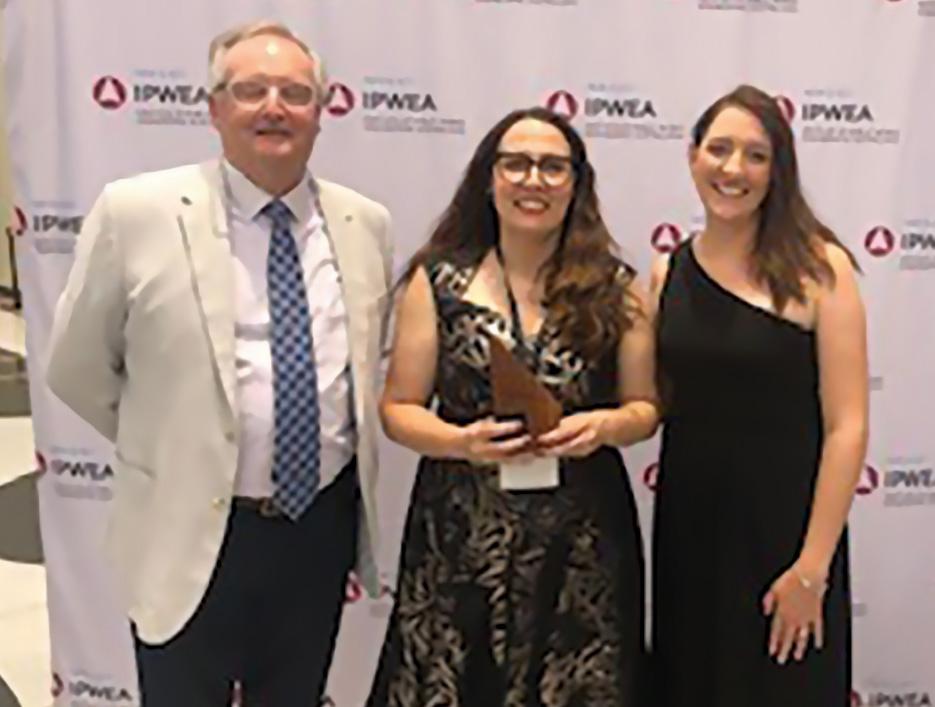
• The Gallery presented 80 creative program and 33 exhibitions last year.
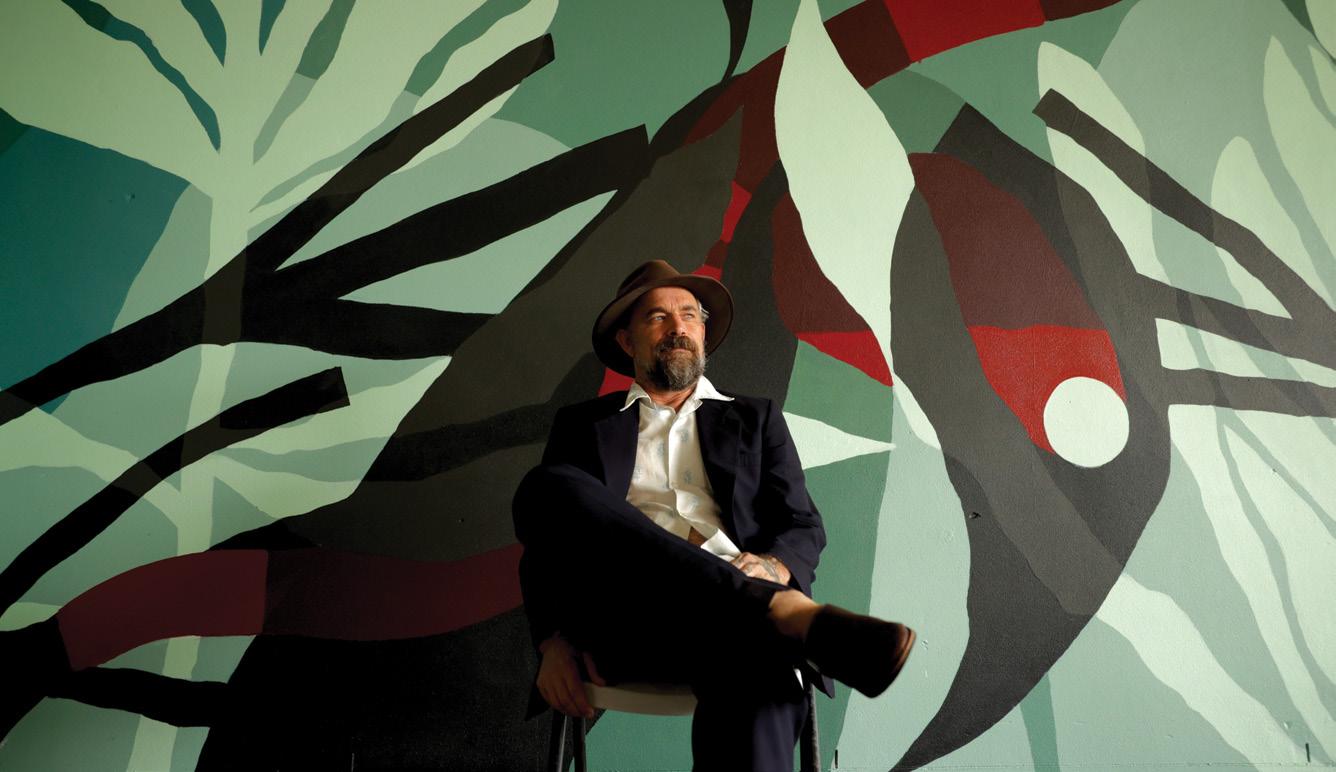
• The gallery has 10 collections, please visit www.graftongallery.nsw.gov.au for more info.
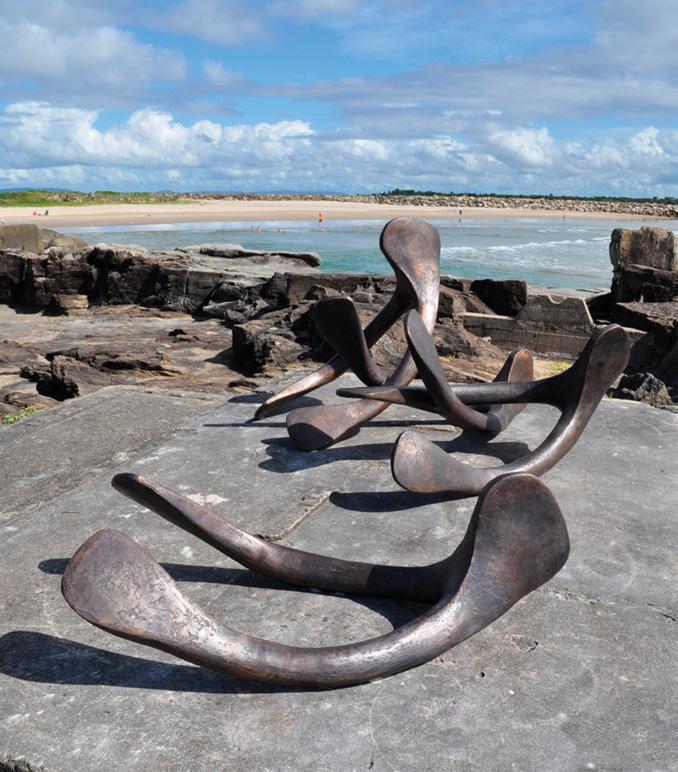

Clarence Valley Council now has a road safety officer after joining the Local Government Road Safety Program (LGRSP) - a partnership between Transport for NSW and Council.
The program aims to raise the profile of road safety in the community, councils and ultimately reduce the number of crashes on our roads.
Road Safety Officer Alana Brooks (pictured) has a multi-faceted role which involves reviewing crash data, conducting road safety audits, identifying potential improvements, and applying for funding for works to reduce crash risk.
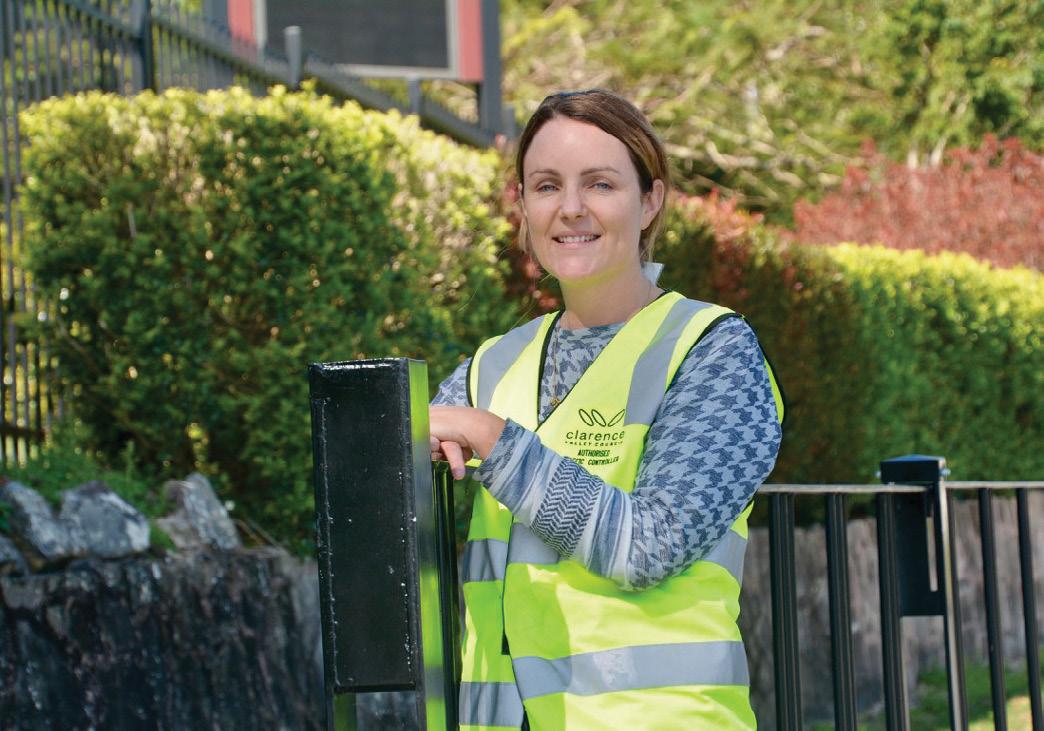
Through this process, Council has secured $1.5M as part of the Saving Lives on Country Roads Initiative to improve safety on Iluka Road over the next two years.
“This project will involve a route length review and treatments along Iluka Road between Woombah and Woody Head and incorporates traffic calming measures at the high-speed entries to Woombah,”
Ms Brooks said.
“We will also be looking at audio-tactile line marking in the non-residential areas and improvements around curves where crashes have occurred.”
Ms Brooks said she was lucky to start at Council when $3.6M had already been secured to improve safety in 18 School zones through the School Zone Infrastructure Program.
“We recently completed an upgrade at St Josephs Public School in Maclean that saw the installation of a new footpath, kiss and drop zone, pedestrian fencing, and better crossing points.” (pictured)
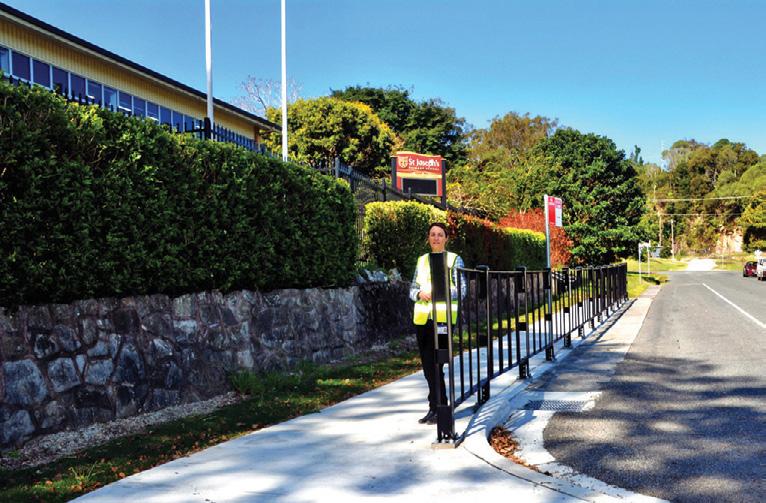
Ms Brooks said she enjoys her role and was excited to be working on Council’s first Active Transport Strategy. The Strategy will replace the Pedestrian Access and Mobility Plan 2015 and the Bike Plan 2015.
“In the coming months we will be working with the community to develop a vision for walking and cycling in the Clarence Valley,” she said.
“We want to get more people out walking and cycling and for the journeys to be easier and safer. The community will be asked where new pathways and road crossing points are needed.”
Sign up to Noticeboard for more information on how you can share our ideas on future planning Alana is part of the Local Traffic Committee, Access Advisory Committee and chairs the newly formed Safe System Working Group.
“The Safe System approach to improving road safety takes a holistic view of the road transport system and the interactions among the key components of that system: Safe Roads, Safe Vehicles, Safe Speeds, and Safe People,”
Through investigations and providing recommendations the group has been instrumental in securing funding for pedestrian and cyclist improvements in Minnie Waters and Angourie.
When a Clarence Valley resident reports a watermain fault or dirty water complaint, they can expect a quick response within hours regardless of the location or time of day.
A burst watermain can cost Council a lot of wasted water, cause a major nuisance to residents, and affect the productivity of businesses. Therefore, time is critical.
Council’s 2022/23 Operational Plan defines the accepted response time to supply failures as two hours from notification during work hours and three hours out of work hours at a 95 percent success rate.
To achieve this, at all times Clarence Valley Council has up to six of its Water Cycle staff on call on a rotational roster to respond to emergency situations. Water responsibilities are split into east and west divisions, while there are on call staff dedicated to bulk water (reservoirs, trunk mains), water treatment plants and Shannon Creek Dam.
“We have a lot of on call staff. More than people would think,” Water and Sewer Operations Coordinator Andrew Potter said. “There are a lot of ageing assets in the water supply field.”
Council’s Water Cycle team has around 40 operational staff dedicated to the huge task of maintaining the infrastructure. Much like the road network above ground, repairs to the water supply network underground include a mix of temporary fixes and complete replacements. Currently underway at Swan Creek is the significant
task of replacing three kilometres of 800mm diameter trunk watermain to future proof the water supply to the Lower Clarence. Due to be completed in November, this $5.8 million project is just one stage in a continuation of works to replace the original watermain when the Lower Clarence was connected to the water supply system in the early 1960s.
The next section of watermain targeted for replacement as part of Council’s watermain renewal program is from Sheehans Lane to Gulmarrad Public School along the partially refurbished Brooms Head watermain.
Meanwhile the replacement of watermains more than 50 years-old on River Street and either side of Coldstream Street commenced as part of the Ulmarra CBD Upgrade in September.
“It is standard construction policy to replace ageing underground infrastructure before a road reconstruction takes place, as it reduces the likelihood of having to dig up the new road surface when breakages occur in the future,” Mr Potter explained.
The pipes have been installed using trenchless technology, which involves horizontal directional drilling under the pavement and minimises disruptions to the community.
If you have an emergency such as a water main break, call the Customer Contact Centre on (02) 6643 0200. Anything Non not urgent reports can be reported made online at www.clarence.nsw.gov.au/Forms/Report-it

The use of drone technology allows Clarence Valley Council to monitor inundation and provide real-time information to the community and staff during emergency events.

At many locations along the swollen banks of the Clarence River, including the Grafton and Maclean levee walls, Harwood, Maclean/Yamba Pacific Highway interchange, Big River Way, Yamba Road and Ulmarra, drones captured the scenes confronting staff and the community during flooding.
The drones were used to monitor river heights at various points, check that sandbags were holding, check levee walls for signs of failure, and in one instance to fly a set of keys across the river to enable access to critical infrastructure.
The aerial visuals are an increasingly useful tool to inform Council staff, whether it be about an immediate situation such as flooding, or updates on road conditions, leading to improved decision-making and community advice.
Senior Information Technology Officer Doug McKenzie, along with Catchment Management Officer Greg Wilkinson, piloted most drone missions during the floods.
“The drones provided real-time reporting both internally and externally,” Mr McKenzie said. “For example, we used drones to check the levees.”
“When there was a reported issue, it took a few minutes to get a drone to Goddards Lane (near Maclean) compared to a boat, which can also cause issues with wake.”
“For the community we were able to provide visual updates on social media to accompany road closure information, particularly for Yamba Road.”
The drones are also being used to collect evidence of damage for National Disaster Relief and Recovery Arrangements. A lot of footage that was shot at Shark Creek Road, Byrons Lane, Loughmans Lane and Mantons Road has been submitted as evidence for Council’s flood damage claim.
Council will continue to use drones to capture aerial vision of road repairs and maintenance to improve ongoing civil works and services in the Valley.
• During the Feb/March flood event, we reached 506,648 people on social media. Most popular a fly over update on Yamba Road which reached 352,876 people and was shared 1,217 times.
• More than $24 million worth of recovery grants have been approved in the Clarence Valley following the Feb/March floods (breakdown: $6,775,200 Australian Government Disaster Recovery Payments, Disaster recovery allowance $332,179, Primary producer grants $15,904,378, small business grants $1,228,481).
• 4% of the Clarence Valley flooded (402sq km)
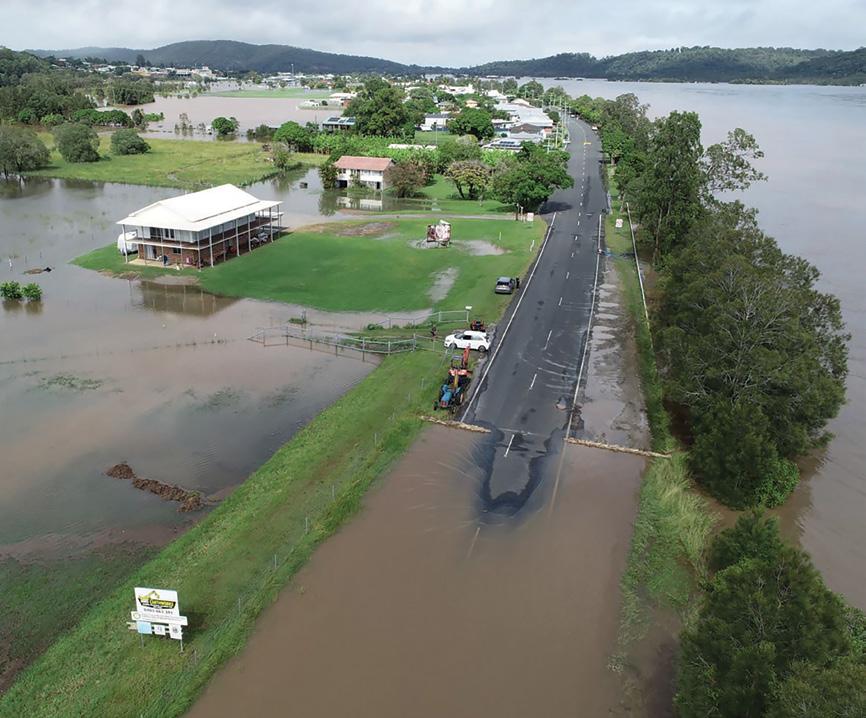
• 9% of agricultural land flooded (284 sq km)
• 7% of residential land flooded (9sw km)
• 100 residences, 9 facilities and 11 outbuildings were damaged.
• 70.33km of fencing damaged
The Lower Clarence experienced its biggest rainfall event since the start of record keeping in 1877, following the sizeable rainfall totals in February and March this year.
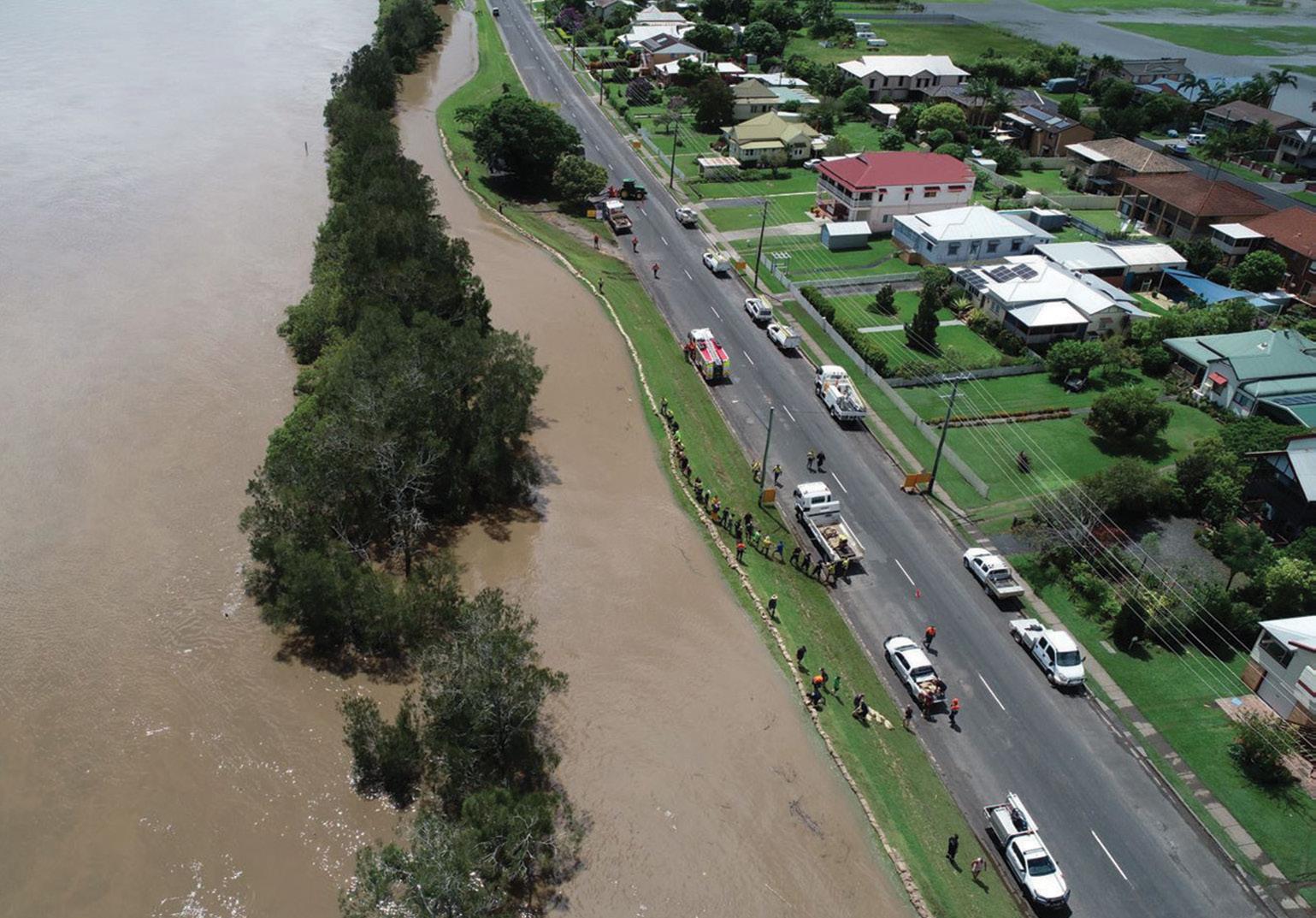
Yamba’s cumulative total for February and March was 1267 millimetres with a total of 549mm recorded in February and a total of 718mm recorded during March.
Yamba received 274.4mm in one day alone on 28 February - the highest daily recording for the month of February since record keeping began.
On 1 March the following day Yamba received 258.2mm, for a total of 532mm in 48 hours.
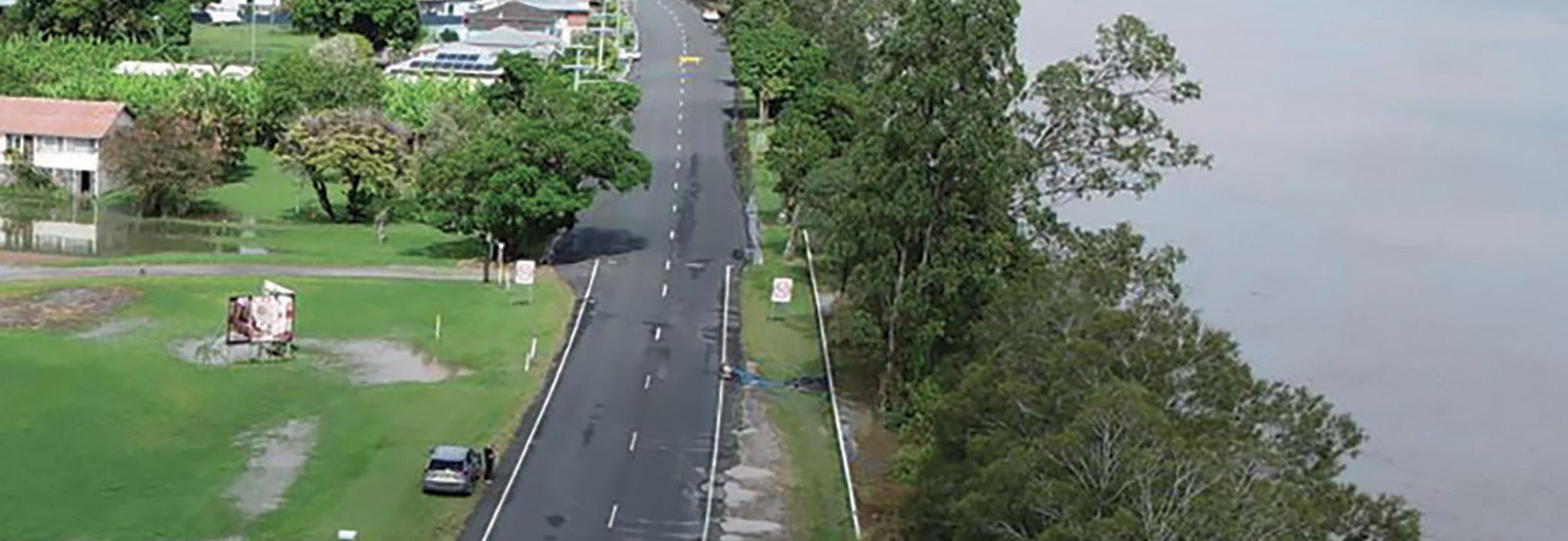
FOR THE COMMUNITY WE WERE ABLE TO PROVIDE VISUAL UPDATES ON SOCIAL MEDIA TO ACCOMPANY ROAD CLOSURE INFORMATION
A high-resolution hydrographic survey has been undertaken of the Maclean Levee to determine its underwater condition following the March floods this year.
Council’s geotechnical advice has found that the levee between McNaughton Place boat ramp and the northern end of the levee bank in Maclean is in generally good condition.
Following this year’s event, Council has updated its flood model which was last reviewed in 2013. It will now be calibrated according to the March 2022 event including consideration of the newly built Pacific Motorway.
The updated design flood levels will be included in Council’s Floodplain Risk Management Plan for the Lower Clarence. The flood model will also be used to assess levee overtopping in Grafton, South Grafton and Maclean. The previous overtopping study dates from 2010 and the review will assess any changes in levee overtopping from the new bridge in Grafton and the Pacific Motorway.
When the March 2022 flood peaked at 3.36m, for 20 hours only one thing stood between the township and major inundation – sandbags. People power helped on the Tuesday night of 1 March 2022.
Large scale sandbagging of the levee was not initially considered based on the flood procedures manual and major flood warnings issued in the preceding 24 hours by the Bureau of Meteorology which predicted a maximum peak height of 3.30m.
The Clarence River peaked at 3.36m around 10.30pm at the flood gauge location, and further downstream at the lowest point of the earthen levee around midnight. The flood peak was approximately 60mm above the levee, but thanks to the sandbags, overtopping did not occur.
“The amazing community response and assistance has given confidence that, were a similar height flood forecast in the future, it is possible to raise the levee within the required timeframe,” Clarence Valley Council Manager Water Cycle Greg Mashiah said.
In early September Council’s outdoor staff laid topsoil and turf along the two sections, each about 100 metres in length, which will further consolidate the emergency works carried out during the flood. Meanwhile, the remaining sandbags along the levee are being removed, with the sand left behind to artificially raise the levee height.
The State Government through Public Works is currently assessing urban levees across NSW through the NSW Flood Levee Repair and Maintenance Program and it is hoped council will be able to raise the levee as part of this program.
“Council aims to secure funding to raise the levee in order to provide greater protection. In recognition that levees will, at some time, be overtopped,” Mr Mashiah said.
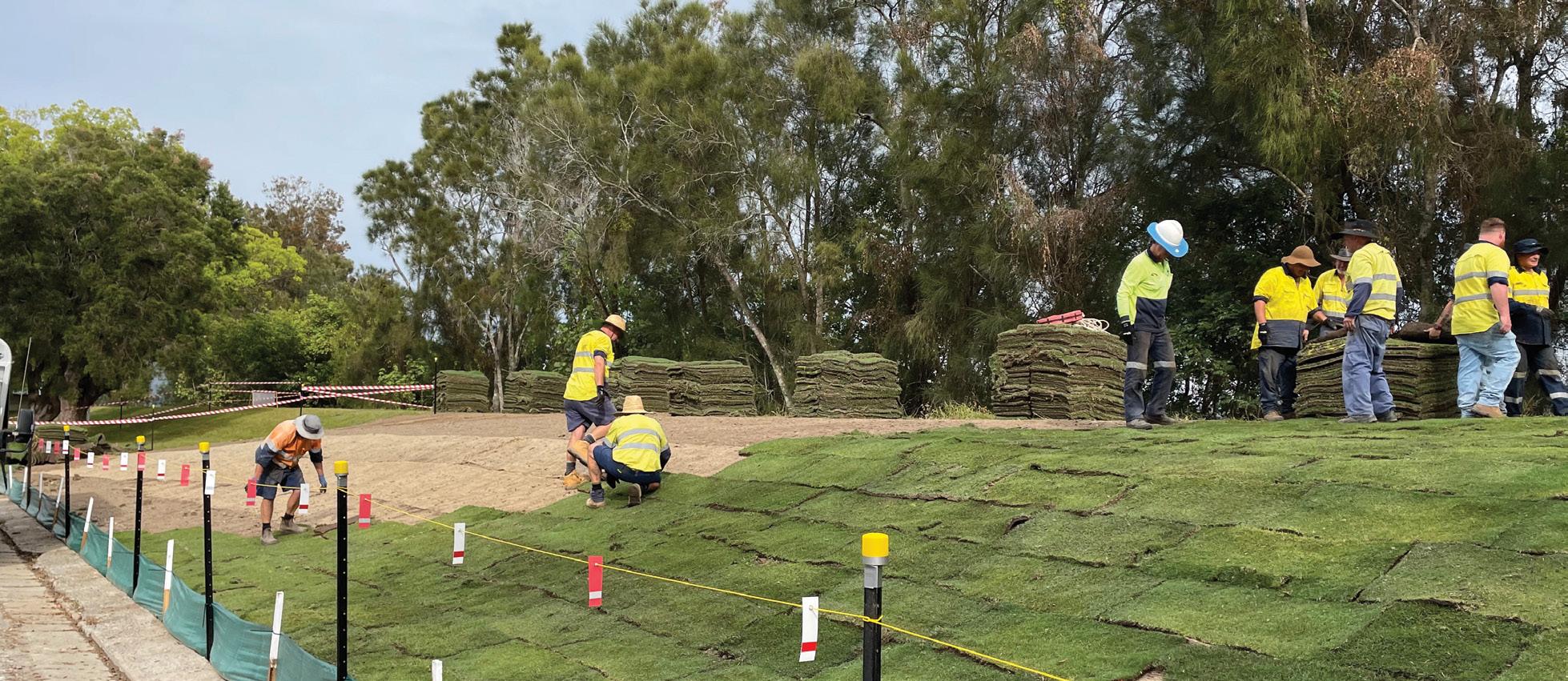
COUNCIL AIMS TO SECURE FUNDING TO RAISE THE LEVEE...
A state-of-the-art Zipper machine is being used by Clarence Valley Council to undertake costeffective and productive road repairs on long stretches of road improving productivity.
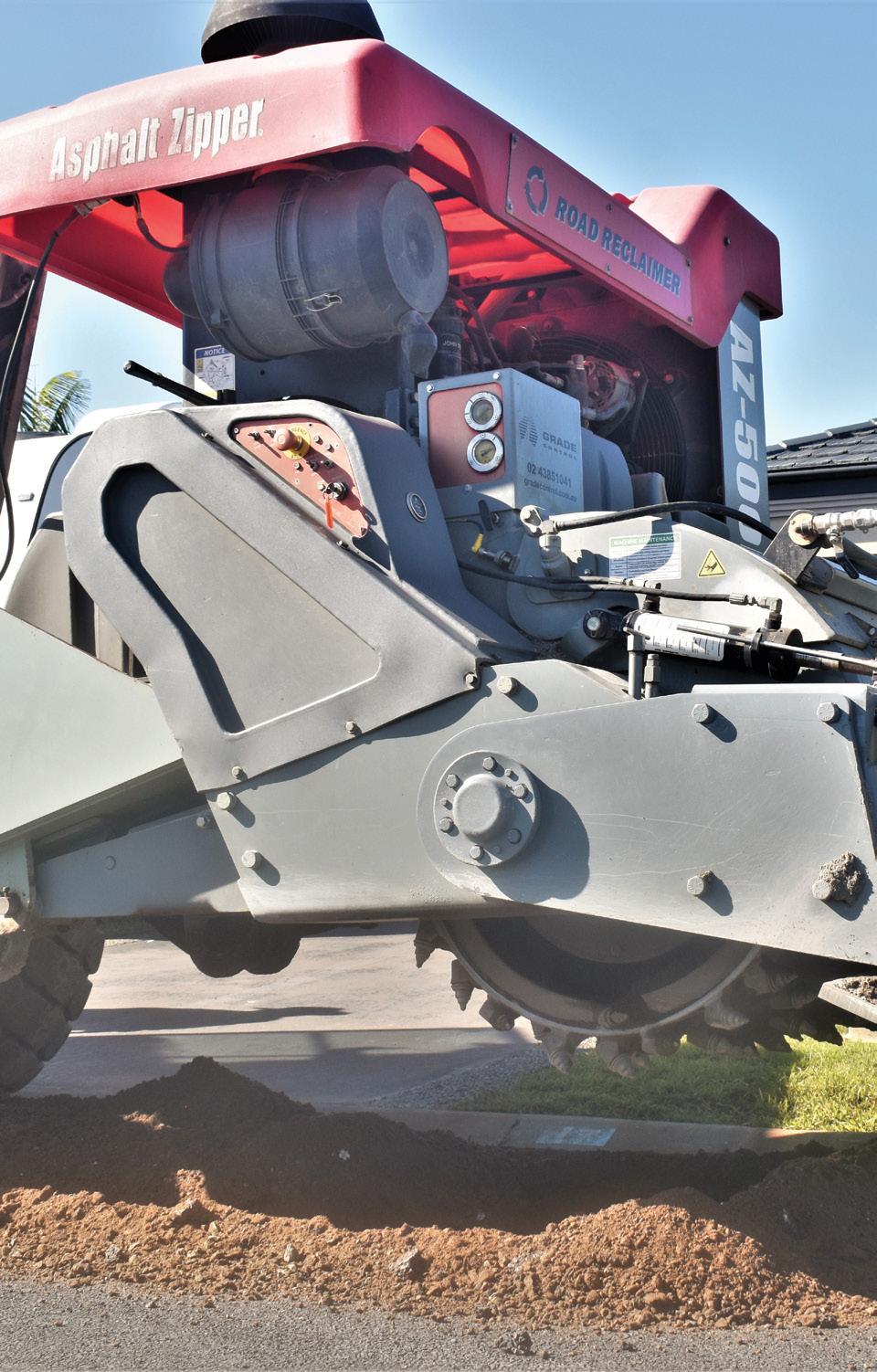
The Civil and Works team hired an Asphalt Zipper to assist with the response to the backlog of deteriorating roads in the wake of the February/March floods.
“The Zipper cuts, crushes and mixes the asphalt into reusable material in one pass,” Director Civil and Works Jamie Fleeting said.
“It achieves comparable results, in a few days, to a full rehabilitation, which would normally take weeks.”
“In addition to time savings, there is also a reduction in material waste and fuel resulting in significant cost savings.”
The Asphalt Zipper is a versatile, portable piece of machinery that has been used to recycle materials into the road base on site.
“We have used it on Armidale Road to reinstate a whole series of pavement failures back into safe condition,” Mr Fleeting said.
“The Zipper converts the damaged road surface into uniformly blended, stable, reusable material resulting in a more durable, longer lasting and smoother road for a small fraction of the cost of rehabilitation.”
At any given time, road maintenance is one of Council’s biggest responsibilities. But the floods and persistent wet weather in 2022 resulted in a significant increase in the number of road defects. Restoring the road network to preflood conditions is a big job that will take at least 12 months to achieve.
Clarence Valley Council publishes a Schedule of Works in its weekly Noticeboard to help inform the community of the various road maintenance activities happening in the Clarence.
Clarence Valley Council has spent $7.8 million in flood response works to date. Assessment of pre- and post- condition of assets is ongoing. However, once complete total flood damage bill is estimated to reach $30 million.
“The project value is only going to climb once we get a better handle on the quantum of projects that fit within the Disaster Recovery criteria,” Director Works and Civil Jamie Fleeting said.
“Places like Yamba Road will need Essential Public Asset Reconstruction (EPAR) works, but at this stage we have just been dealing with the Emergency and Immediate response.”
The joint Commonwealth and State government funded Disaster Recovery Funding Arrangements (DRFA) came into place in 2018 to help communities recover from eligible disasters.
Councils can apply for funding for the estimated cost of repair of damaged essential public assets such as roads, bridges, footpaths, pedestrian bridges, culverts, levees and stormwater infrastructure under Category B of the DRFA.
Public assets such as ovals, playgrounds, showgrounds, skate parks and swimming pools are not considered essential under these arrangements.
Council has received funding for the demolition and replacement of a total of 31 timber bridges with the construction of stronger, safer and more durable concrete bridges as part of the Fixing Country Bridges Program administered by Transport for NSW.
Timber bridges are expensive to maintain, vulnerable in disasters and subject to load limits when they age. It is for these reasons that council has sought funding to address issues affecting this type of infrastructure. Tenders for 16 of the 31 bridge projects have been endorsed by Clarence Valley Council this year that total $19.35m and include:
• Five (5) replacement bridges at Winters Bridge (Jackadgery), Barretts Creek Bridge (Coaldale), Dundoo Floodway Bridge (Kungala), Billys Creek Bridge (Dundurrabin) and Wintervale Creek Bridge (Dalmorton) - two Design and Construct contract packages.
• Seven (7) replacement bridges at Bostock Road Bridge (Tucabia), Bridge No.3 Marengo Road (Hernani), Fifteen Mile Swamp (Coutts Crossing) and Mitchell Road Bridge No.1, No.2 and No.3 (Pillar Valley) – Construct-Only contract package.
• Four (4) replacement bridges at Coutts No 1 bridge, Coutts No 2 Bridge, Koukandowie Creek Bridge and Skinners Swamp Bridge (all located on Armidale Road) – Design and Construct contract package.
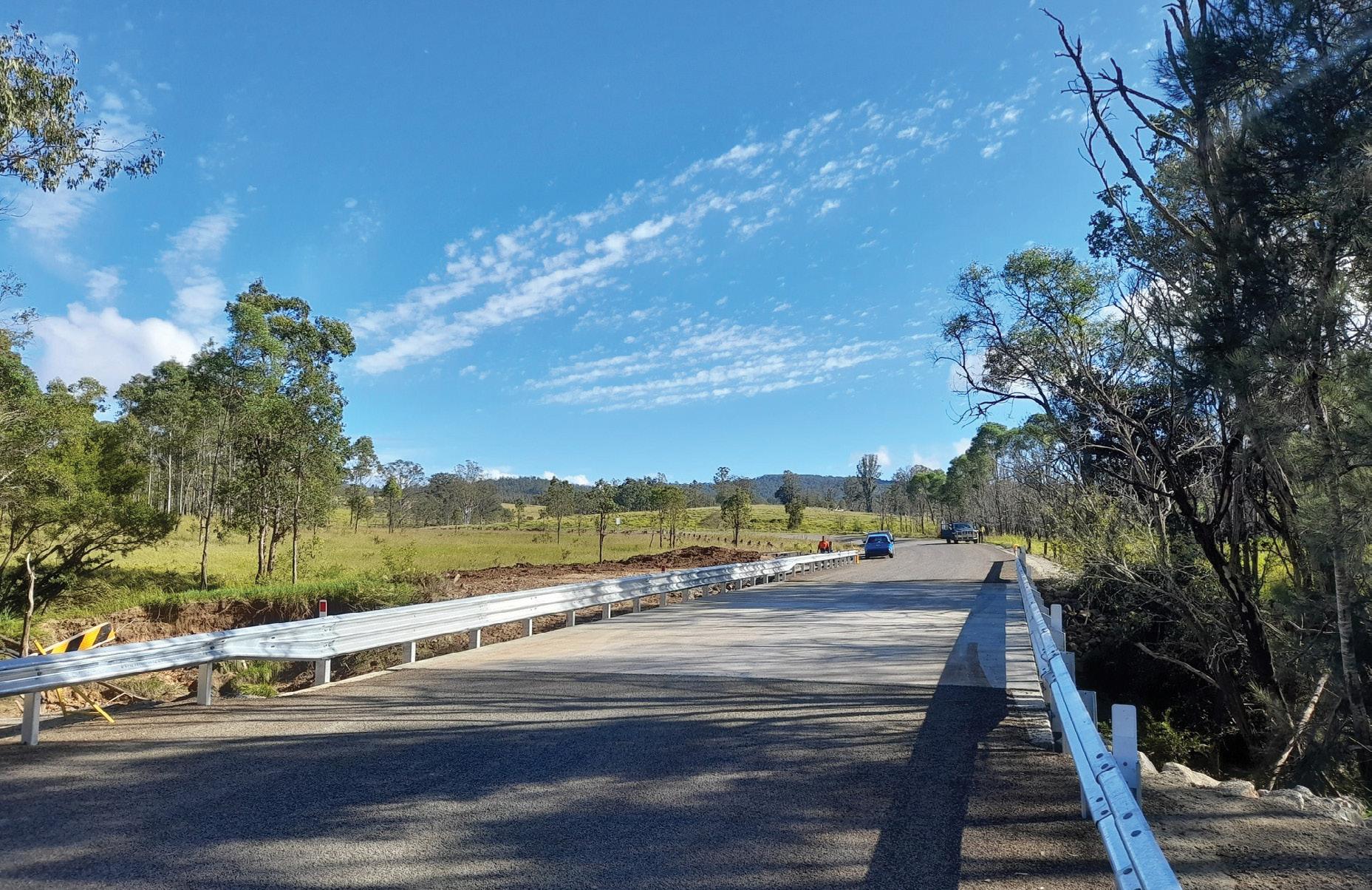
Council now has until 30 April 2023 to start construction on each of its 31 bridges under the first round of the program and 30 April 2024 to open the bridges to traffic. To date, eleven bridges have been completed and opened to traffic with a further ten bridges currently under construction.
Following these works there are 92 timber bridges that still require replacement in the Clarence Valley area after funding for Bluff Bridge was allocated under stage 2a of the Transport for NSW Fixing Country Bridges program. Council has applied for funding for a further 75 timber bridges to be replaced as part of stage two of the Fixing Country Bridges program which is still to be confirmed.
Clarence Valley Council works across the region to develop infrastructure that complements our way of life.
While a significant amount of the Works and Civil services budget is spent on roads and bridges, there are many other projects in the planning and delivery stages.
Beautifying parklands and improving accessibility by creating active walkways has become a focus with projects such as the Grafton Waterfront redevelopment, the zig zag footpath at Yamba, better facilities at McKittrick Park , the Ulmarra CBD Upgrade and now the new Grafton Aquatic Centre.
The following pages feature a snapshot of Clarence Valley Council projects including plans for the redevelopment of Maclean Civic Hall.
The new Grafton Aquatic Centre will be a state-of the art regional facility that is set to become the envy of swimmers and splashers across the Northern Rivers.
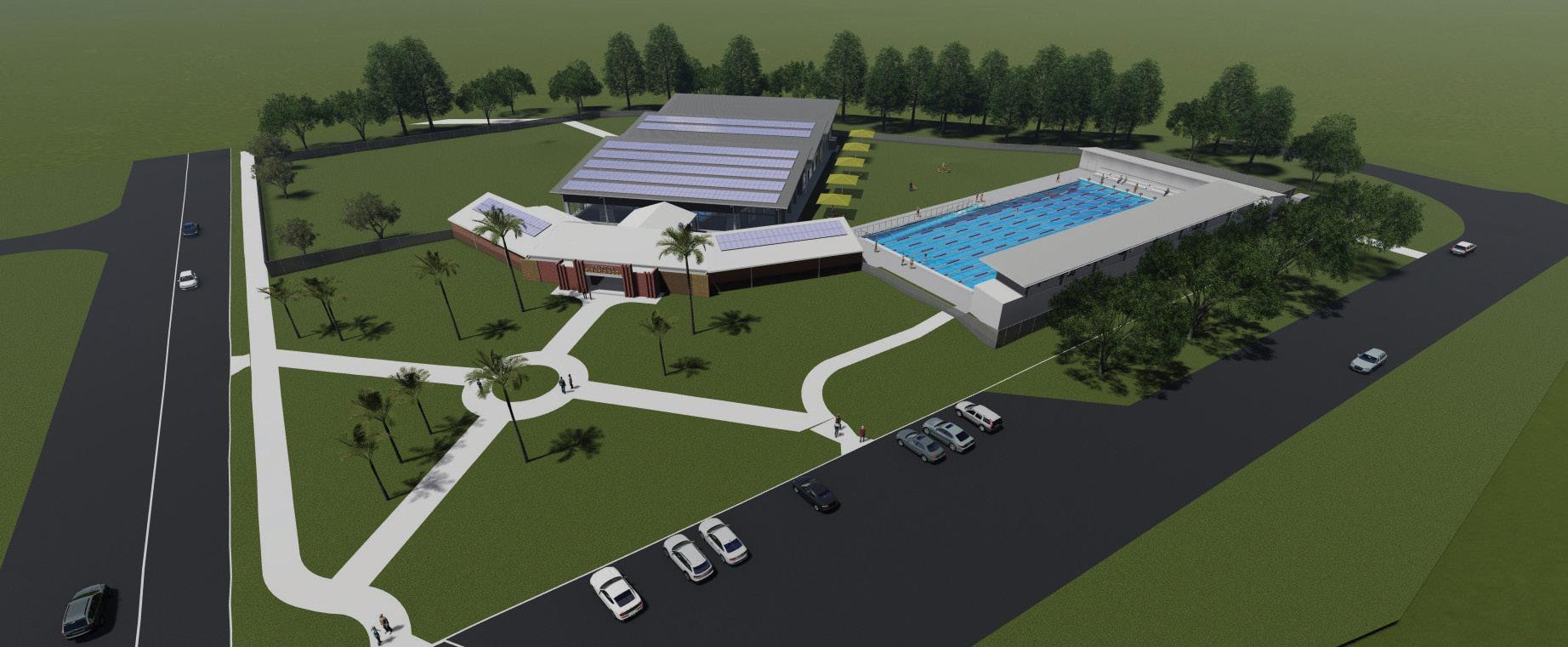
It will be an inclusive, contemporary aquatic facility with a variety of water spaces and support services that meets the needs of the local community.
Clarence Valley Council has committed $3.8 million to start construction of the new centre after a development application was approved by the Northern Rivers Joint Regional Planning Panel in late September.
The funding will assist with stage one of the redevelopment which will include:
• a new accessible 50m eight lane outdoor pool and grandstand seating for more than 600 patrons
• a new accessible 25m heated pool to FINA (international sports federation) standards
• a new beach entry heated learn to swim program pool
• additional amenities, shade and recreational space
The existing Grafton Olympic Swimming Pool is more than 60 years-old and has reached the end of its useful life becoming operationally unsustainable.
The new design will seek to increase the sense of community within Grafton and surrounding communities through a wholistic design method that supports competitive swimming, learn to swim, leisure, and well-being.
Council will establish a community focus group to work with council for the life of the project.
Construction will be addressed through a two-stage approach to enable functionality of the facility and funding allocation.
The extent of works will provide a competition standard 50 metre pool with eight lanes –the existing pool has seven lanes – that is capable of hosting regional level swimming competitions.
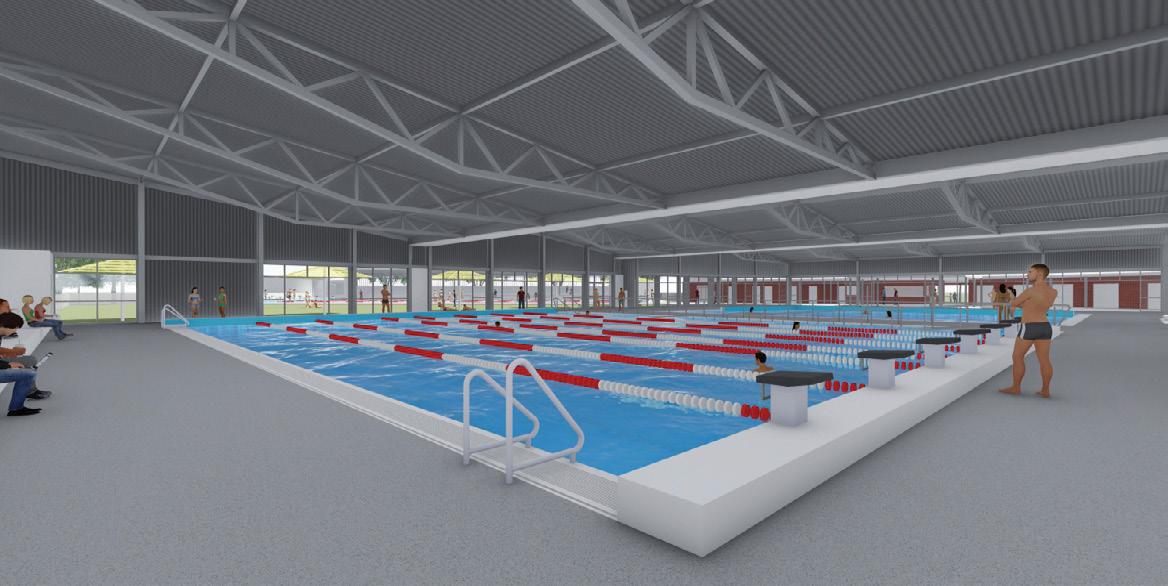
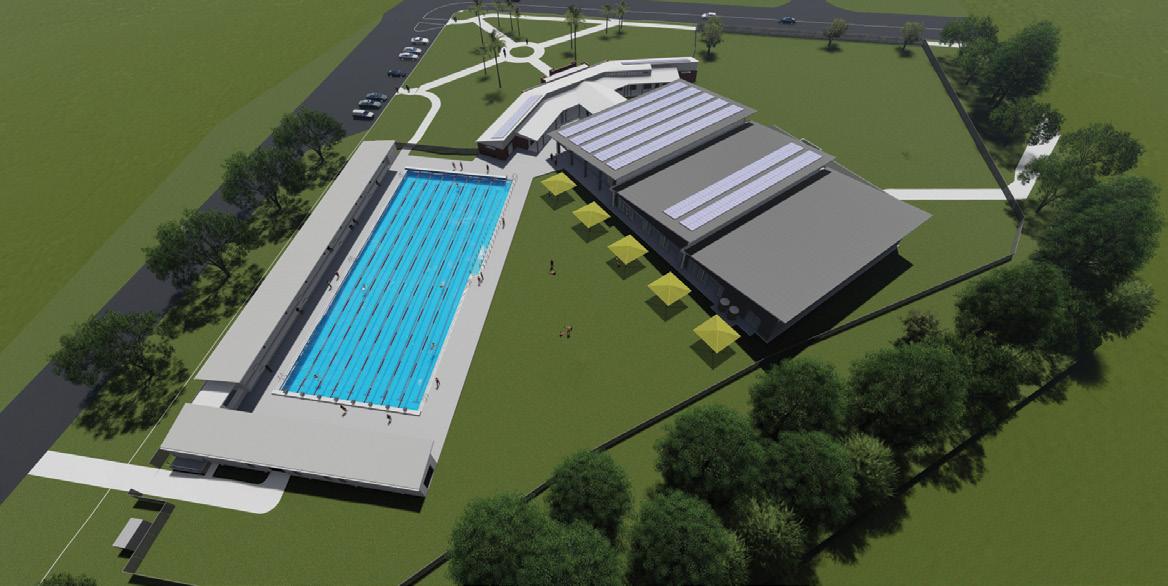
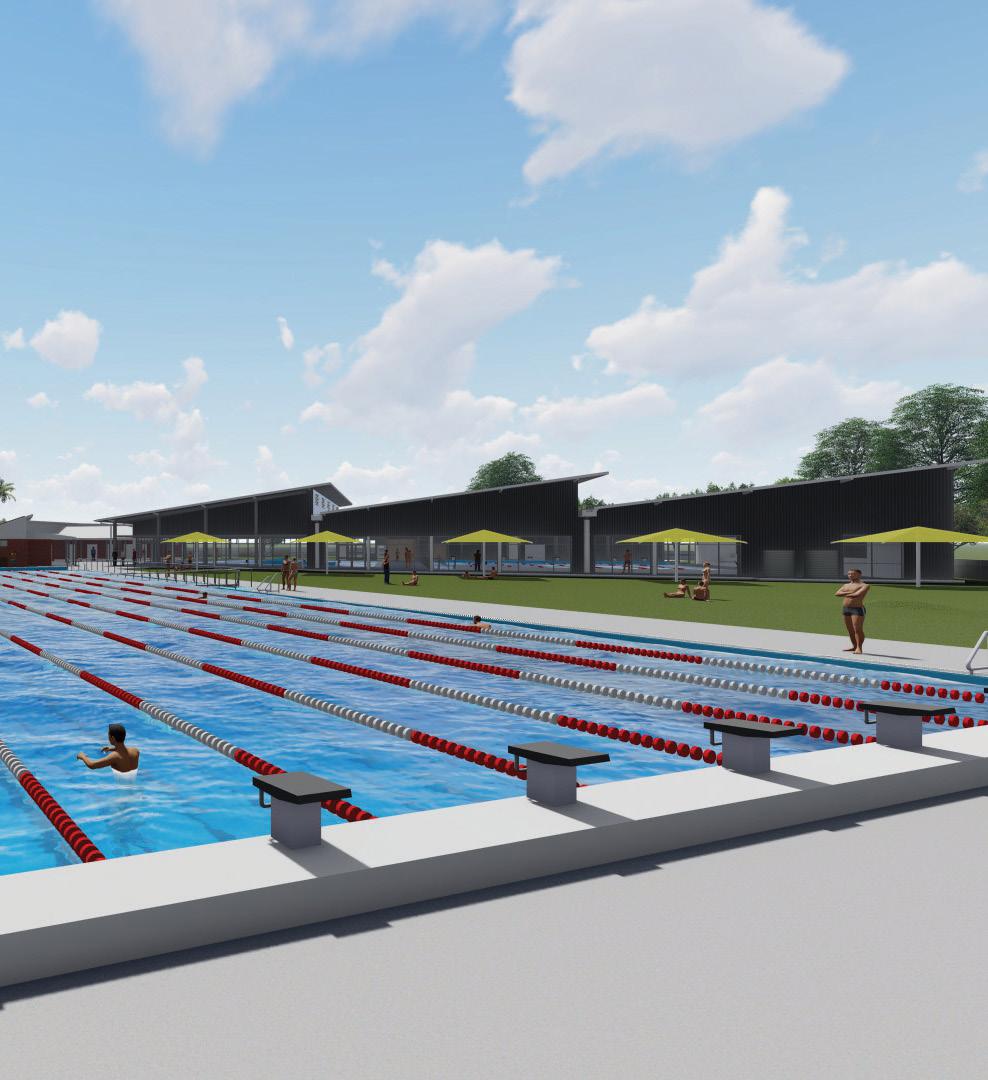
The centre will have covered water spaces capable of supporting recovery and learn to swim programs as well as active sporting events for recreational users, school groups and swimming clubs.
The beach entry heated pool will feature distinct zones including a learn to swim area and toddler’s play space
Green open spaces on site will encourage promotion of other recreation such as Yoga and Tai Chi.
Preservation of on-site heritage will be an important consideration in the redevelopment including provision for retaining the heritage front facade of the pool.
Energy efficient options have been included in the design approach to enable operational sustainability by committing to energy saving initiatives such as rain water storage, solar power and heating and optimising glazing and shading solutions.
Pool users will continue to have access to Council’s other pool facilities in South Grafton, Maclean, Yamba, and Glenreagh.
Detailed designs have been completed and Council will be working with the lead designer, Facility Design Group to progress the project to the first stage of a select tender.
Images right (from top): The new Grafton Aquatic Centre (artists impression).
Prev. page: The new Grafton Aquatic Centre (artists impression).
Sporting clubs are benefiting from major upgrades to facilities at McKittrick Park in South Grafton.
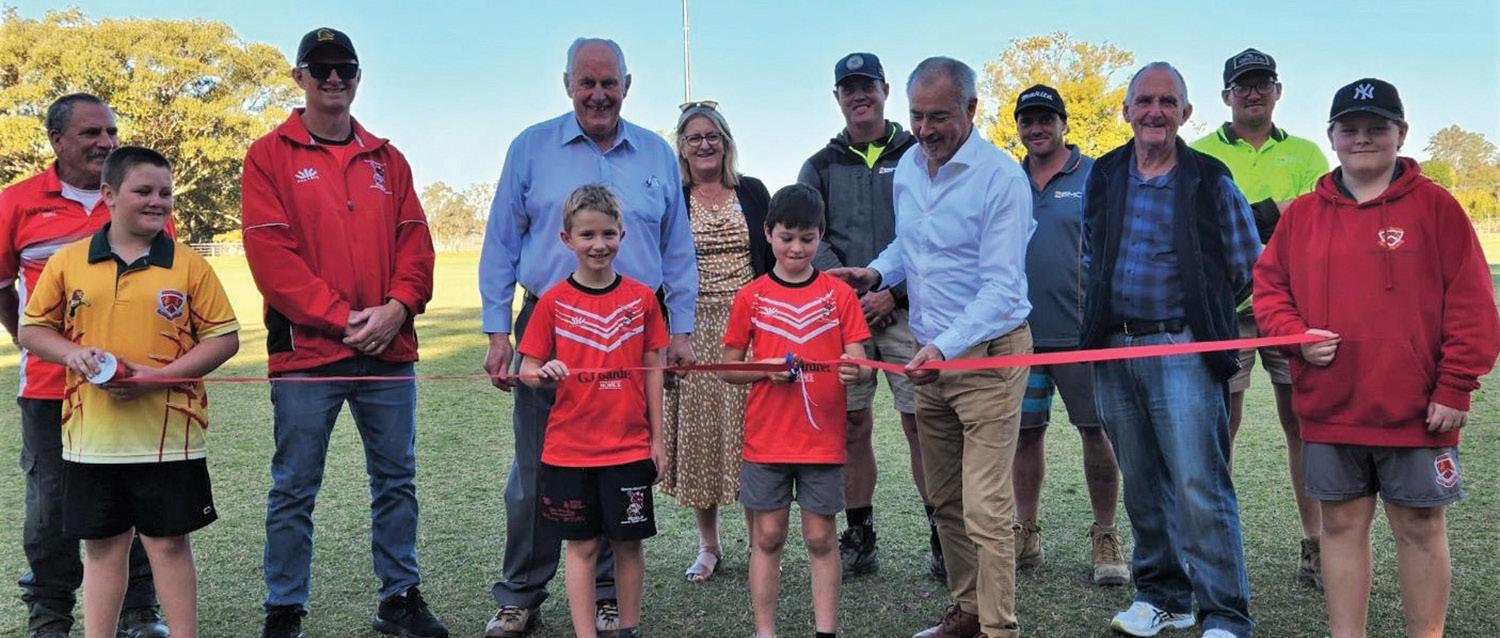
Renovations to the change rooms, public amenities and the referee room have been completed along with replacements to lighting of the sports field.
The South Grafton Rebels - who call McKittrick Park home - have more than 200 kids registered playing junior league. The venue is also one of the premier cricket grounds in the Clarence Valley.
Hundreds of people will benefit every sporting season from these upgrades which have been designed with a universal fit out. The showers now have partitions for the first time, making it a safe and inclusive space for all.
The majority cost of the McKittrick Park Upgrades project was funded by the NSW Government through the Stronger Country Communities Fund ($185,722) and the remaining $14,000 by Council.
The upgrade to McKittrick park included the demolition and replacement of fixtures and fittings including basins, bench tops and ambulant toilets, painting, application of non-slip epoxy flooring, upgraded LED lighting, new privacy partitions and new bench seating in change rooms.
The field lighting cost $432,895 which included $240,000 in funding from the Federal Government’s Local Roads and Community Infrastructure Program, designed to support councils deliver priority infrastructure projects to support jobs and help communities bounce back from the COVID-19 pandemic.
The timber light poles were replaced with new higher poles meeting current Australian Standards. Several local contractors collaborated with Council’s Open Spaces & Facilities team to deliver the projects.
Preliminary works have started for the Ulmarra CBD Upgrade and Bailey Park. The project includes beautification of Coldstream and River Streets and adjacent footpaths and improving stormwater drainage. It will also redevelop Bailey Park providing a new toilet block, playground, seating, shelters, lighting, footpaths and shade trees.
Unlike similar projects, Council will deliver the entire project with its own staff instead of using external contractors. In-house delivery provides several benefits including cost savings, the ability to liaise closely with the community and be more responsive to their needs.
Council started in September with Water Cycle staff conducting initial investigations to replace the water mains. Installation using trenchless technology is underway.
Ongoing community consultation sees the team working with residents and customers to ensure notification prior to any supply interruptions.
The streetscape aspect of the project will start in the coming months and will be complete by Mid 2023, weather permitting.
The works at Bailey Park will start first and will result in a net gain of seven car parks in the Ulmarra CBD at the project’s completion.
The Ulmarra Riverside Village Precinct Plan is designed to establish Ulmarra as a ‘must see’ destination for visitors, revitalising the river’s edge and improving access, and promoting Ulmarra as a place of character and heritage significance.
The project has been made possible through $2.3 million funding from the NSW Government Open Spaces Legacy Grant, $602,732 funding from the Australian Government through the Local Roads and Community Infrastructure Program and from additional Council reserves.
The first stages of the Grafton Waterfront Precinct are taking shape with construction of a threemetre-wide shared path for pedestrians and cyclists along the foreshore now visible from the air.
The redevelopment will also create revamped picnic areas, viewing areas, access ramps, a boat ramp, shade shelters, seating, lighting, and artworks that celebrate the culture of the local area.
Upon completion, the path meandering through parkland alongside the Clarence River from Prince Street to Clarence Street will be dotted with seats and picnic spots along its 700-metre length.
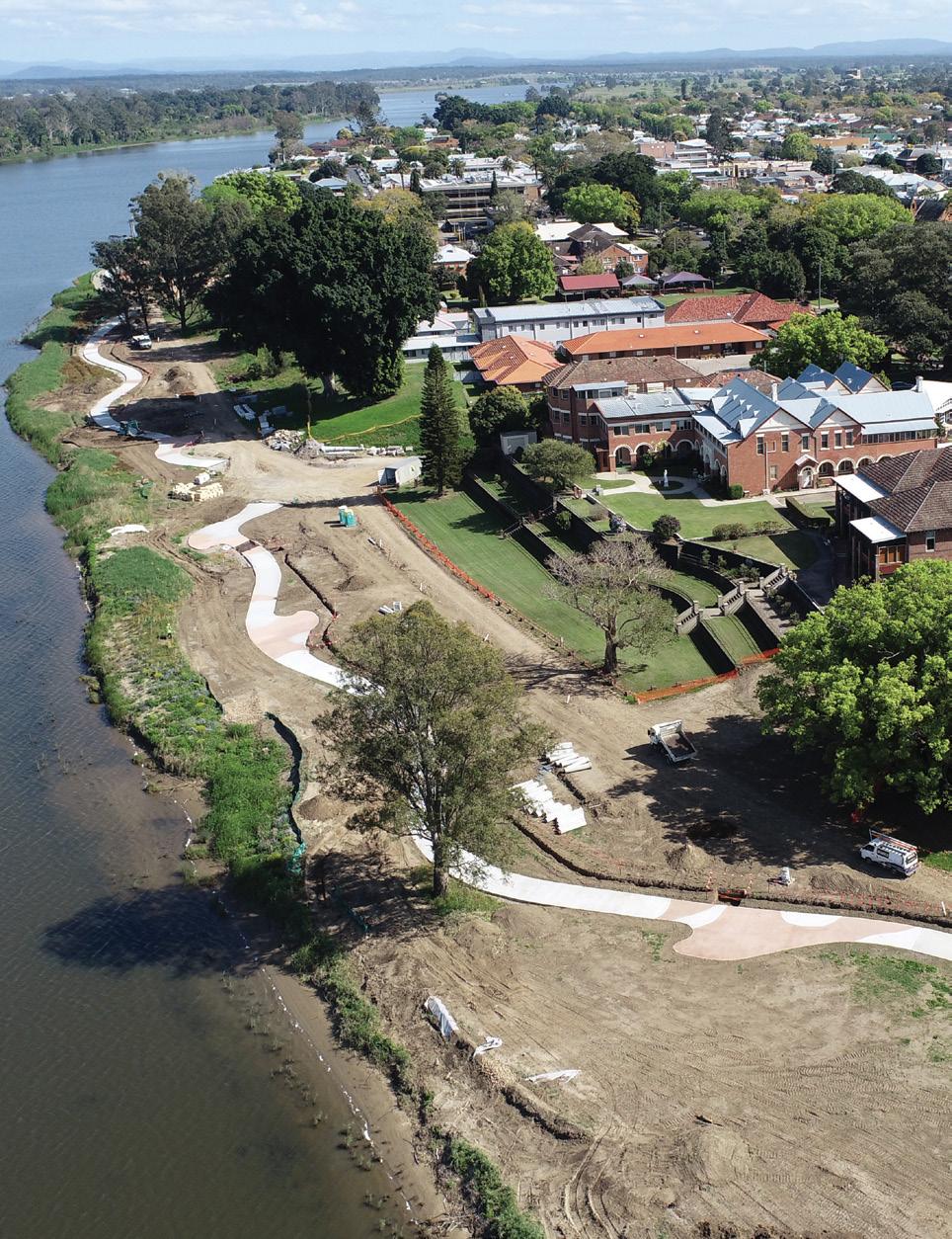
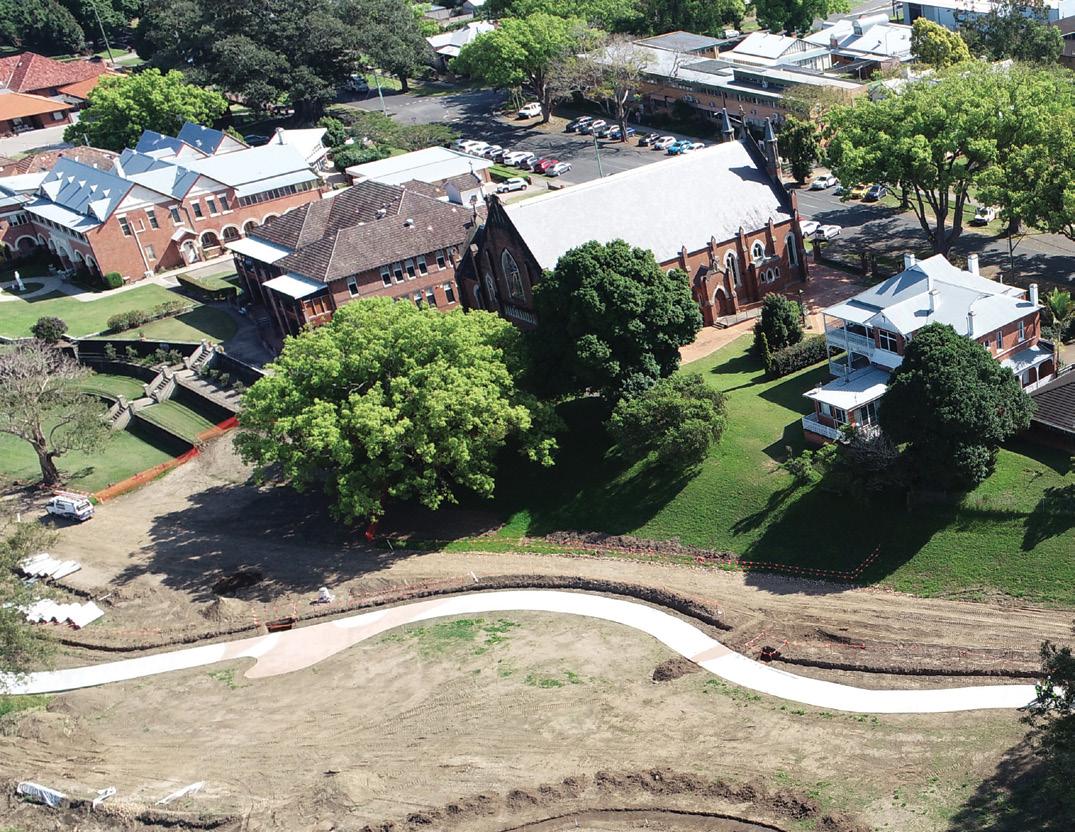
“When completed, locals and visitors will be able to comfortably and safely walk and recreate along the waterfront, drawing attention back to one of Grafton’s natural and cultural assets,” Vee Design Landscape Architect David Hatherly said.
The design includes improved access for pedestrians into Memorial Park from Prince Street, with several historic structures and monuments as well as some garden features relocated to other prominent locations within the park.
There will be a total of 10 interpretive signs distributed throughout the precinct, with four based on heritage, four on Indigenous culture and two on the Clarence River.
The Grafton Waterfront Precinct project is funded through an Australian Government Community Development Grant of $6.5 million to the Clarence Valley Council. Council is also in partnership with Alder Construction to deliver the project.
The total value of Clarence Valley Council’s investments that do not invest nor finance the fossil fuel industry now totals $10 million.
The milestone, announced in the Monthly Investment Report – June 2022, was reached because of a $3 million term deposit invested in non fossil fuel affiliated industries.
Climate change impacts of Council’s investment portfolio are now considered as each investment matures, with preference given to financial institutions that publicly state that they do not invest nor finance the fossil fuel industry, noting that investments only be made providing the rate of return is equivalent or more favourable and does not increase the overall risk of Council’s investment portfolio.
A new 170-metre-long Zig Zag Path starting at Flinders Park at Yamba, provides safe access to the popular coastal foreshore and main beach for visitors and residents.

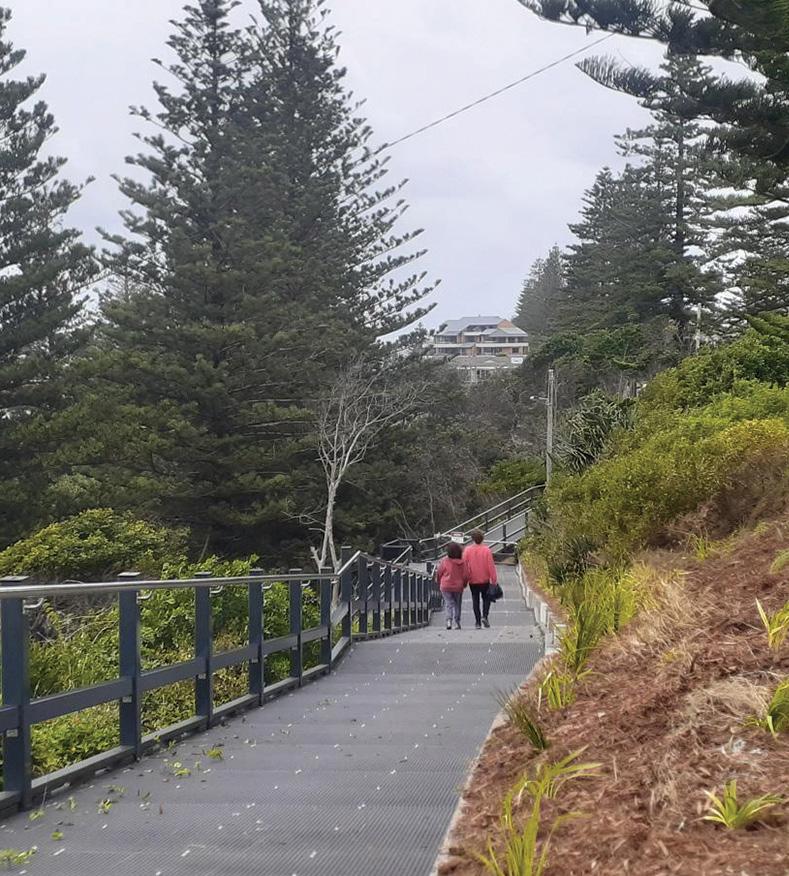
The zig zag path was built as a 2.3 metre wide board walk style walkway to enable ease of movement for pedestrians traveling both up and down to the beach. As part of the work, slope stabilisation and rehabilitation of the area was undertaken. This will improve pedestrian access by removing steps and having a continuous ramp.
The Zig Zag Path Upgrade project was jointly funded by the Clarence Valley Council and the Australian Government through the Local Roads and Community Infrastructure (LRCI) Program.
Zig Zag path has:
• 7,890 rivets installed
• 1,100 bolts installed
• 1,300 brackets installed
• 730m of 90mmx40mm recycled plastic used
Clarence Valley Council’s Civil Services team has completed an overhaul of one of its longest and most popular shared user paths.
A new bitumen seal now blankets the 3.8km stretch of footpath from Ryan Street, South Grafton out to Rogan Bridge Road, Waterview Heights - an important link between South Grafton and Waterview Heights.
The path has been repaired, widened in sections, and resealed, so it is even more suitable for users through improved safety and accessibility. Council also repaired drainage issues that were causing frequent inundation and damage to the pathway.
Council received funding for the reseal from Transport for NSW in response to community requests to upgrade the path which was installed about 30 years ago.
The smooth ride was reopened for cyclists, runners, walkers, and scooters alike in early July.
The project meets societal and infrastructure objectives within Council’s Community Strategic Plan - Clarence 2032. It maintains our diverse infrastructure base to serve the needs of the community, and an active transport connection route between South Grafton and Waterview Heights, while promoting safe and healthy activities in harmony with the natural environment.
Yamba is now home to one of Australia’s premier skateboarding destinations with the completion of the Yamba Skate Park upgrade.
The park has been designed with an advanced clover style bowl with a three metre deep end, great flow lines and transitions that are unique on the east coast of Australia.
It is tight and challenging, but has enough potential for lots of different tricks to keep even the greatest of skateboarders engaged for a long time and wanting to come back for more.
The delivery of the Yamba Skate Park Facility is a strong example of community partnership. The final design was borne out of the vision and passion of the Yamba Skate Working Crew - a committee established in 2020 and made up of Council representatives, community members and skaters to reinvigorate the space and create a design generated from the heart and soul of the community.
The revamped skate park is now more than 1000 square metres bigger than the original skate park to cater for the ever-growing popularity of skateboarding and roller sports in the coastal town of Yamba.
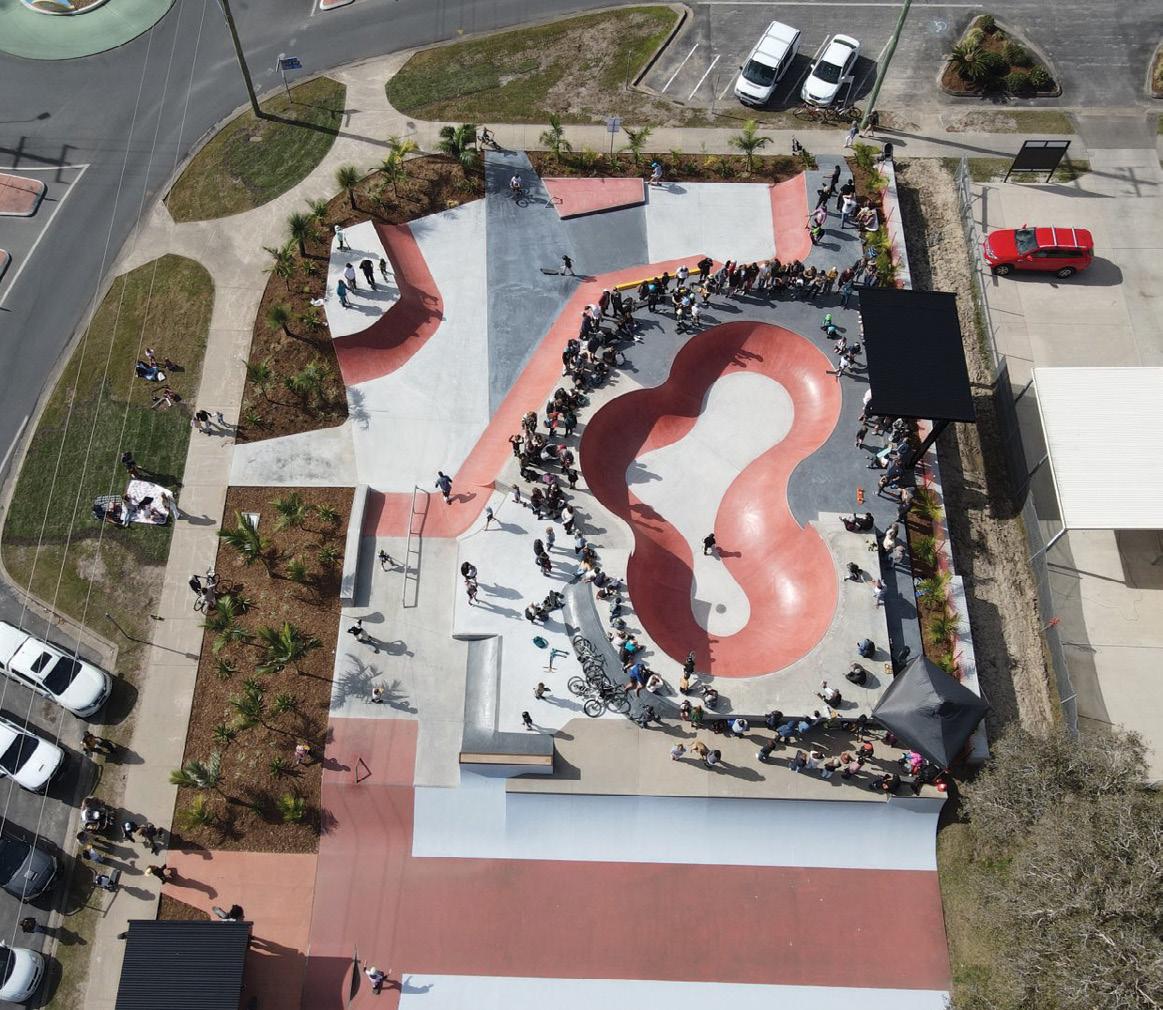
The park now has such a diverse range of new obstacles, ramps, stairs, rails, flats, and lots of fun, creativity-inspired skateable elements, and boasts a super advanced and fast three-metre deep clover-style bowl. There is also improved shaded seating areas, hang out spaces, landscaped gardens with local palms, native grasses and shrubs, and improved pedestrian access.
The Clarence Valley Council project was assisted by funding from the Federal Government’s Local Roads and Community Infrastructure Program with Federal Member for Page Kevin Hogan securing $500,000 towards upgrading the skate park.
The Yamba skatepark is a one-of-a-kind facility in the Northern Rivers, offering young people the opportunity to develop advanced skill levels in the skate bowl.
A new 1.7 megalitre drinking water reservoir on the site of the old reservoir in High Street, Lawrence has been constructed to benefit the local community.
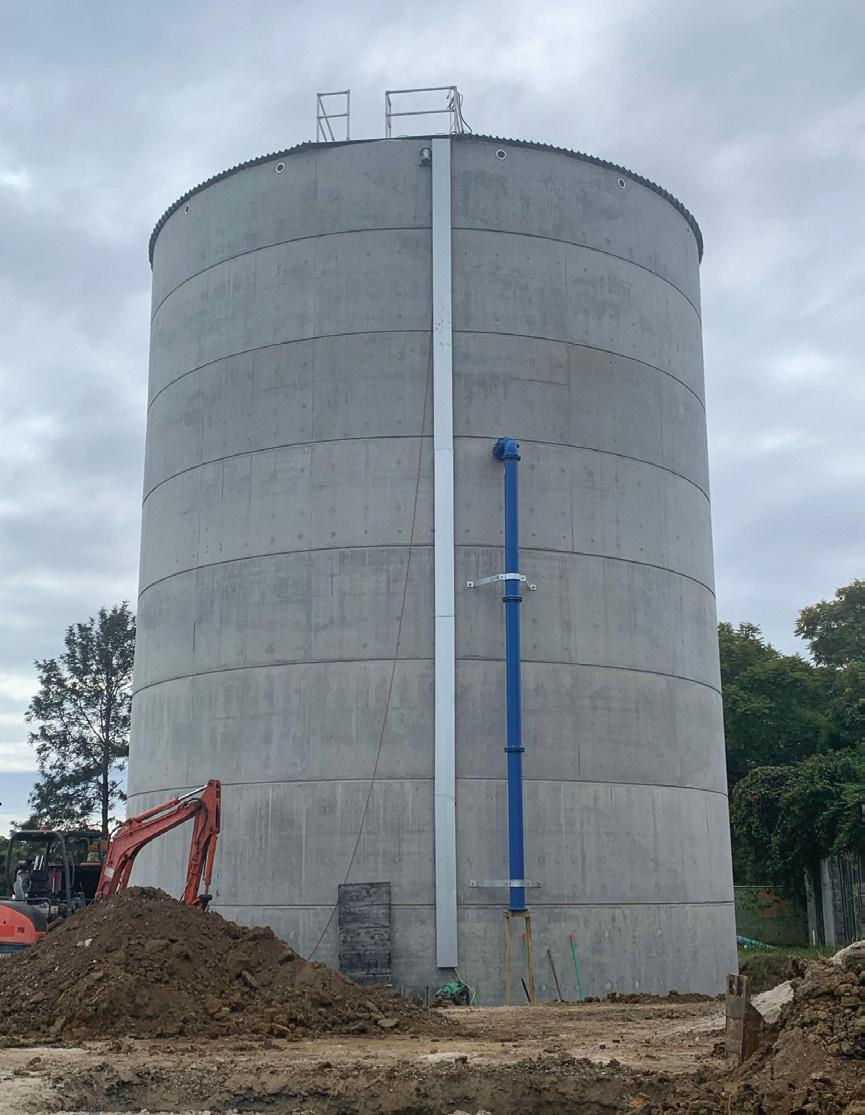
The giant reservoir was completed in October by Hornick Constructions; a Brisbane based reservoir construction company. The $1.9 million project was delayed due to COVID restrictions.
The new reservoir provides the community of Lawrence with a reliable and safe back up water supply.
The reservoir is 16 metres high and almost 13 metres wide and constructed from locally sourced concrete. Other local suppliers were used during the project, where possible.
Image top left: Yamba Skate park (artists impression).
Above right: 1.7 megalitre water reservoir, Lawrence.
Opp. page: Artists impression of Clarence Valley Culture and Community Precinct.
Following years of community feedback, Clarence Valley Council has secured funds through the Bushfire Local Economic Recovery Fund to deliver a new community precinct.
The Clarence Valley Culture and Community Precinct will be delivered in stages, with the first being a modern performance hall with a tiered seating capacity of over 270+, larger stage and wings, backstage facilities for performers as well as a functional workshop for onsite construction of props and backdrops.
The facility will also have multi-purpose spaces that will support community needs. In addition to new features, the performance hall will encompass a commercial kitchen, art gallery space and an outdoor event space that allows the community and event goers the opportunity to connect with the mighty Clarence River.
Below this renewed community facility will be a covered 40 space carpark complete with elevator to enable easy access. A concept design has been prepared and a consultant engaged to finalise the detailed design ready for construction.
During the consultation process, the community supported a new, modern facility that would develop the performing arts sector of the Clarence Valley. The constructive feedback provided through engagement sessions in 2018/2019 has been examined by the project team to ensure that the design reflects the feedback.
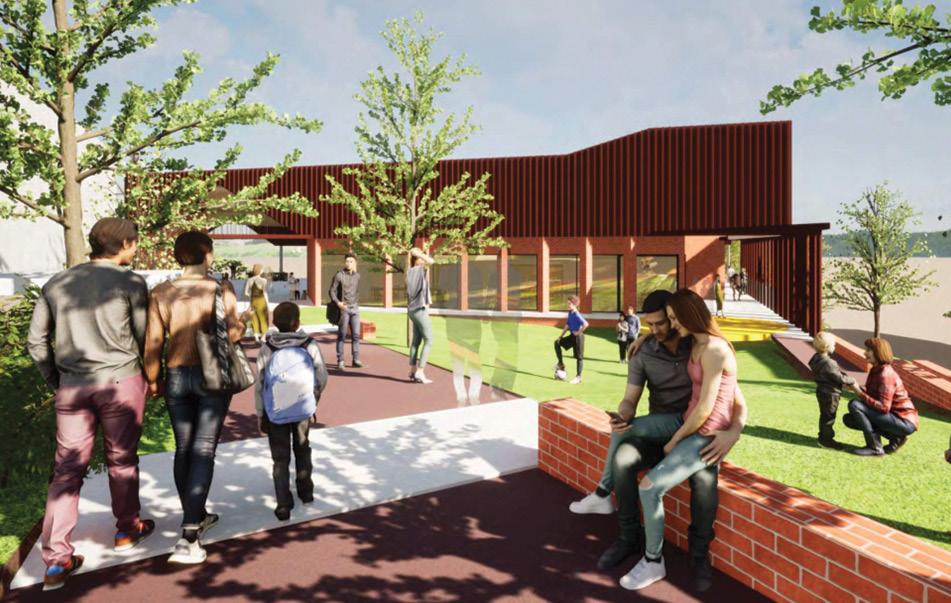
Council conducted design workshops in September with key civic hall stakeholders to further inform the design process and ensure that the new facility delivers on expectations and practical functionality as well as audience comfort.
The tiered seating within the main auditorium will ensure that every seat in the house will be able to see the stage clearly.
Two multi-purpose conference rooms will provide fully functional conference facilities to support community and Council meetings, host various art exhibitions or act as additional changing rooms for larger preforming groups. The design will see a new green space between the performance hall and the current Council Building.
The Clarence Valley Culture and Community Precinct project is being jointly funded by the Australian Government Bushfire Local Economic Recovery Fund ($4.997 million) and Local Roads and Community Infrastructure (LCRI) Program ($3 million) and from additional Council reserves.
The state-of-the-art Grafton Regional Landfill facility uses methane capture technology to greatly reduce its carbon footprint, and has further plans to start generating its own electricity in the future.
As landfill waste breaks down it releases greenhouse gases, including methane, which is approximately 27 times more potent than carbon dioxide. Instead of releasing into the atmosphere, the methane produced by Clarence Valley’s waste is captured onsite, combusted by a flare and converted to carbon dioxide.
As a result of the methane flare, Clarence Valley Council has reduced its greenhouse gas emissions by 17,000 tonnes per year. The flare was introduced in December 2013, which equates to a saving of about 144,500 tonnes of harmful greenhouse gas emissions to date.
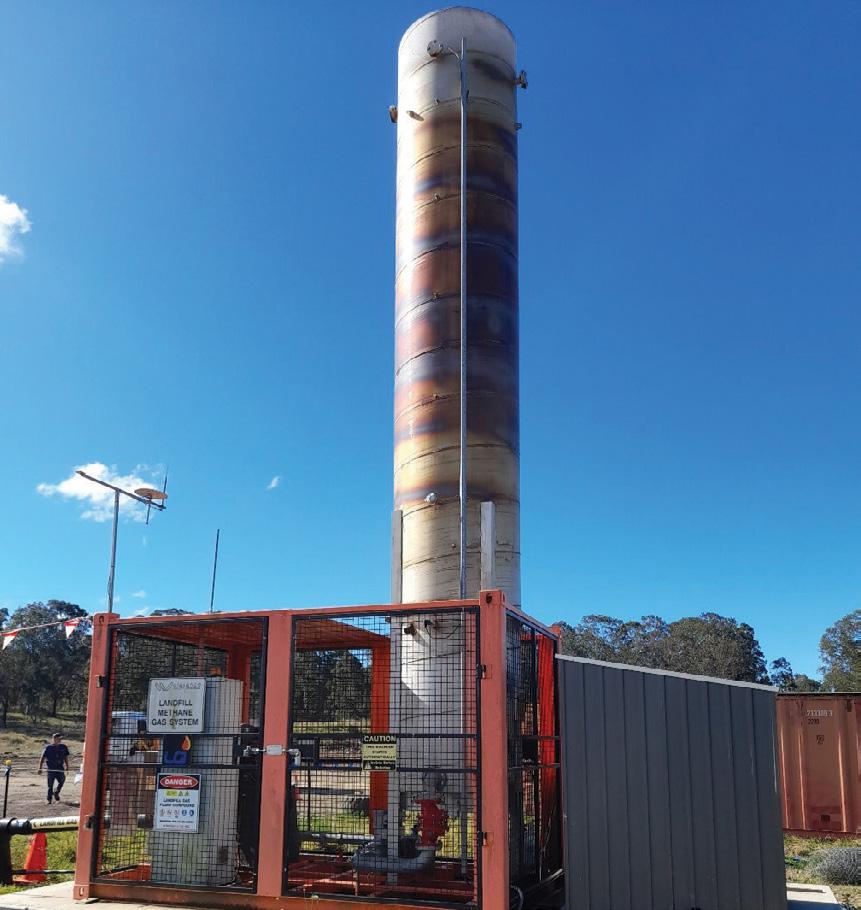
Throughout the landfill are a series of gas collection wells that transport the gas under vacuum to the flare, which burns at about 800 degrees Celsius to convert the methane to carbon dioxide and water vapour.
“Methane flares are certainly commonplace in the larger metropolitan landfills, but not so much in medium-sized regional landfills like Grafton,” Coordinator Waste and Sustainability Ken Wilson said.
The Grafton Regional Landfill facility has fully complied with stringent design and monitoring requirements to control potential pollution since its construction in 1998.
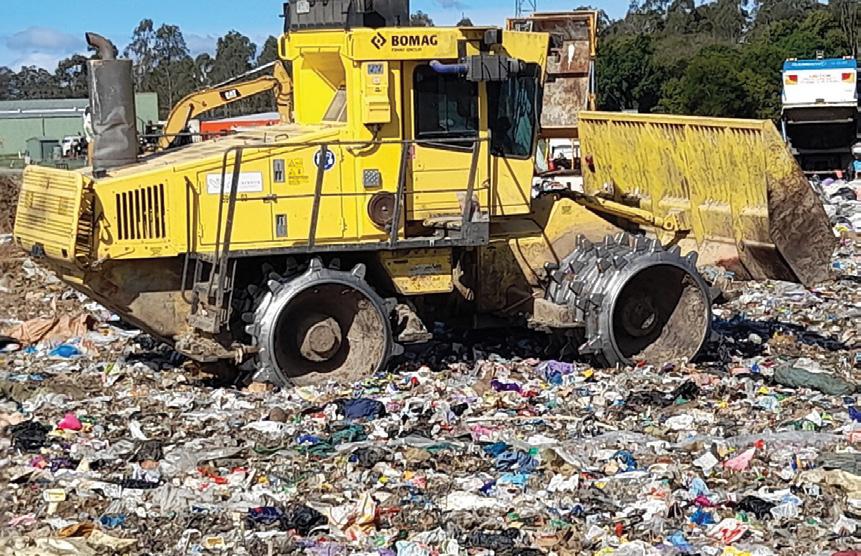
“Landfills are not generally known as being environmentally friendly,” Mr Wilson said. “The Grafton Regional Landfill uses industry best practice to ensure we have in place the many safeguards and procedures to protect the environment whether it’s air, groundwater, surface water or resource recovery.”
The methane flare at the Grafton Regional Landfill was commissioned on 2 December 2013, after the Federal Government had introduced a carbon tax in July 2012, which was repealed two years later.
As a result of contracts made with the Federal Government during that period, Council benefits financially from the flare’s emissions reductions under the Emissions Reduction Fund. This funds the maintenance and expansion of the gas capture and flaring system.
Landfill staff are in the process of planning the next phase of emissions reductions with renewable energy development at the facility:
• Generate electricity from captured methane gas
• 2.5 MW solar farm at land fill site
• Total output up to 3.5MW of energy fed into the gridequivalent to more than 90 per cent of Council’s electricity demand and cutting emissions by over 40 per cent.
Clarence Valley Council’s Community Energy and Emissions Reduction Strategy was adopted in July 2021 following the adoption in 2018 of ambitious renewable energy and greenhouse gas emissions reduction targets for its operations. This includes supplying 50 per cent of Council’s electricity demand from renewable energy by 2030, with the long-term goal to source all electricity from renewable energy, and reducing greenhouse gas emissions by 40 per cent. The strategy is informed by the global consensus that we all need to act to reduce emissions rapidly to align with the goals of key international agreements and reports.
The Clarence Environmental Learning Facility (ELF) is a valuable educational resource for sustainable living in the Clarence Valley.
Located at the Grafton Regional Landfill and Resource Recovery Centre on Armidale Road, South Grafton, the ELF aims to improve environmental awareness through interactive displays, group workshops, tours and meeting room facilities.

From observing cultural connections to water, to standing under the tree of knowledge, and taking a pledge to commit to one positive change, a tour of the ELF is an immersive experience.
As Dirtgirl says,
“It’s called a facility, but it’s more like a theme park”.
“The ELF is an amazing centre of stories,” the long-time friend of the ELF said during a recent visit with her besties Scrapboy and Costa the Garden Gnome earlier this year.
“When we understand that we are nature, we are bound by responsibility and care. Come to connect with why we care.”
Discover different ways to reduce your carbon footprint by choosing recycled materials, buying locally grown and made products, and getting creative to repurpose scrap and unwanted objects. Learn to avoid single-use plastics like straws, cutlery and water bottles, and build simple habits like using a keep-cup for your coffee or cotton mesh bags for your vegetables.
The ELF will inspire you to make sustainable choices your thing.
So find out if you’re a water whizz, or whether you’ve been putting all your waste in the correct bins – including the lesser known REDcycle bin for soft plastics – book your excursion to the ELF today.
Programs at the ELF are tailored to suit pre-school and school groups of all ages, Tafe and university students, and community groups, including curriculum related talks and workshops around biodiversity, climate change, catchment management, water quality, water efficiency and conservation. It is also open to the general public. Guided tours can be arranged of our Organics Recycling Facility (ORF), Materials Recycling Facility (MRF) and landfill, as well as Shannon Creek Dam.
To find out more and to arrange a visit, get in touch with our Environmental Education Officer Suzanne Lynch via the customer contact centre on (02) 6643 0200 or email council@clarence.nsw.gov.au


The ellusive brush-tailed rock wallaby is being magically captured in its natural environment at Shannon Creek dam.
Several cameras have been installed on site at the dam to monitor threatened species under the NSW Government’s flagship Saving Our Species program.
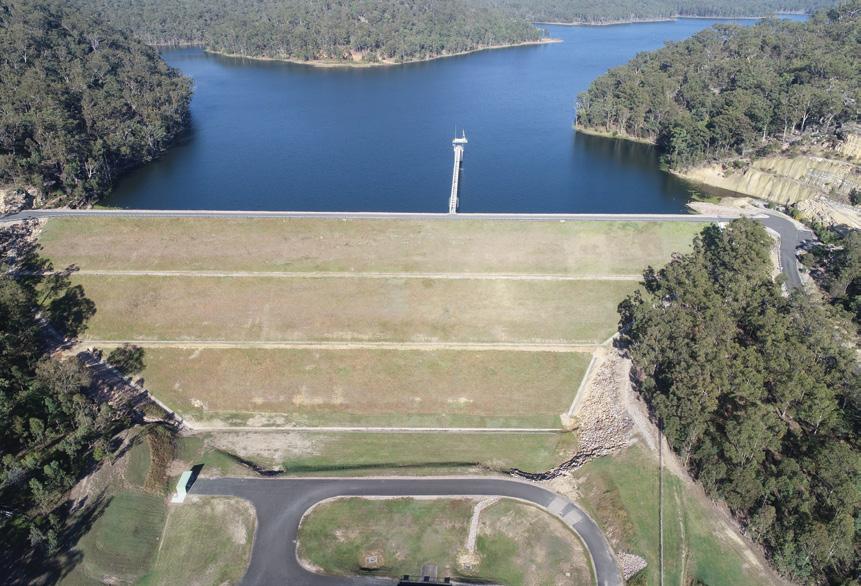

This conservation project aims to secure the Brush-tailed Rock-wallaby in the wild in NSW for 100 years, engage local communities in its conservation, and encourage the NSW community to identify with it as a flagship for threatened species conservation.
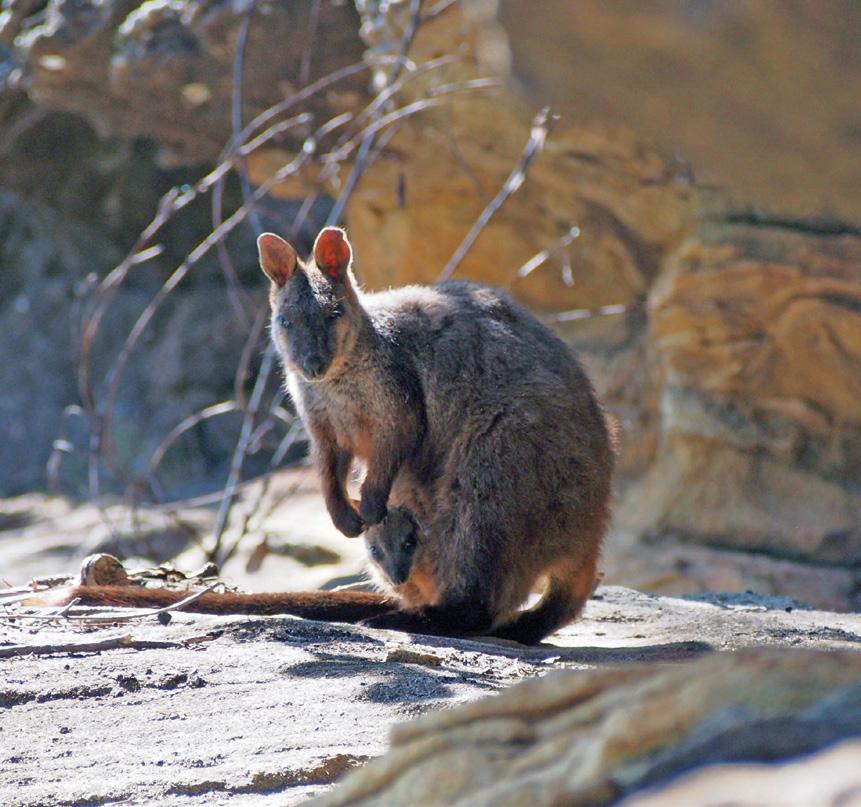
Shannon Creek is one of eleven sites in NSW identified by experts to conserve the species of brush-tailed Rock wallaby Council staff regularly check on the rock wallaby population to make sure they and their young are safe from threats of feral animals (wild dogs, cats and foxes).
The site has been monitored since the late 90s and another threatened species the spotted tailed quoll (tiger quoll) is also present on site.
The water storage facility is located on 4500 hectares with a significant portion managed under a Voluntary Conservation Agreement. It sits between two sandstone escarpments that provide habitat to many threatened native flora and fauna including a species named after Shannon Creek - the Shannon Creek Boronia (Boronia hapalophylla).
There are less than 50 emus remaining along the Clarence coast. Read on to learn what Clarence Valley Council and a collaboration of community and government partners are doing to protect our iconic endangered population of coastal emus.
Since emu surveys started in 2000, the population of Clarence Valley coastal emus has declined from approximately 140 individual birds to fewer than 50 when the last survey was conducted in 2017.
It is believed that collision with vehicles has caused over 50 emu deaths in the Clarence coast area since the year 2000 according to NSW Government data. Widespread and severe bushfires in recent years are also thought to have contributed to loss of more emus.
The coastal emu is listed as an endangered population in the NSW North Coast Bioregion under the NSW Biodiversity Conservation Act 2018. Having the status of an endangered population recognises
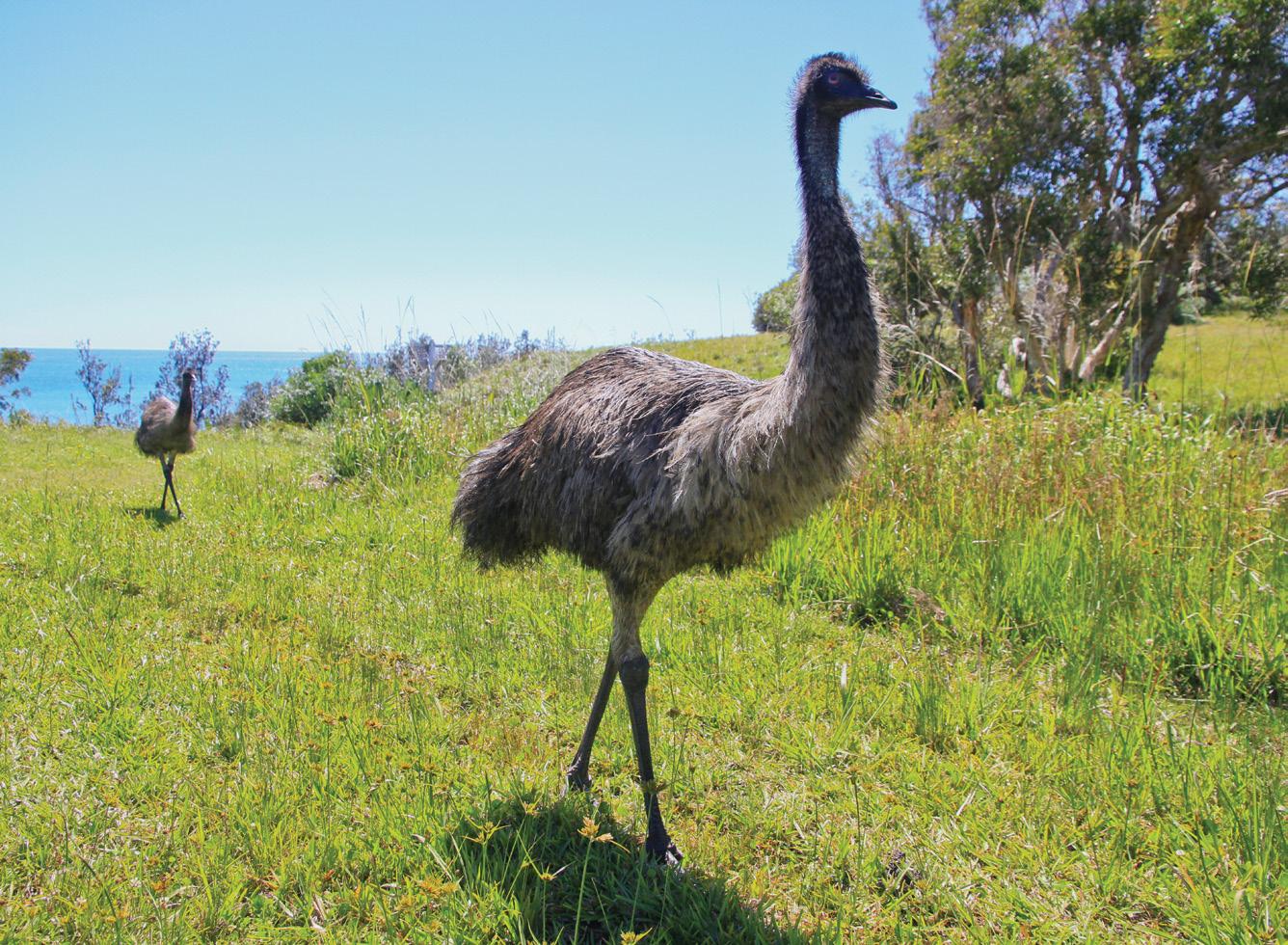
that there are threats to the viability of the population. Threats include collision with vehicles when emus cross a road and predation by feral animals (foxes, wild dogs and pigs).
The Coastal Emu Project was hatched following the death of an emu due to vehicle strike on Brooms Head Road in February 2021. This sad event galvanised the desire for more concerted action to protect the coastal emus given significant decline in population numbers over the last 20 years.
The agitation of one local landowner quickly grew into a collaboration with community and government to improve awareness of the declining coastal emu population and complete proactive actions to reduce risks to the emu population. Effort to improve resilience of the endangered emus continues with the NSW Department of Planning and Environment’s Biodiversity and Conservation Division completing emu tracking using drones with thermal detection capacity, design of emu breeding and release program, recommencing a census
To date the Project has successfully achieved the following:
• Emu Zone patches installed on Brooms Head Rd,
• speed reductions for a 7-kilometre stretch of Brooms Head Rd,
• fencing trials to promote safe passage of coastal emus to/ from their favoured road crossing points,
• installation of dedicated Vehicle Approach Signs – a first for the CVC area, and
• no emus have been killed by vehicle strike along Brooms Head Road since the project began.
of emu numbers, as well as control of feral pigs in areas frequented by our endangered emus. Council is supporting these additional and beneficial actions with the view to seeing our coastal emu population grow and become selfsustaining once more.
Research by the University of Western Sydney, funded by the NSW Government’s Saving Our Species program, has determined that our coastal emu population is genetically distinct, however our local emus are not a separate species, nor a subspecies of the inland Australian emu.
The Coastal Emu Project is a fantastic example of how communication, collaboration, combined energy and commitment to a common cause can improve onground outcomes for our environment and the things that we value in the Clarence Valley. Together, we will continue to work to protect the Endangered Coastal Emu.


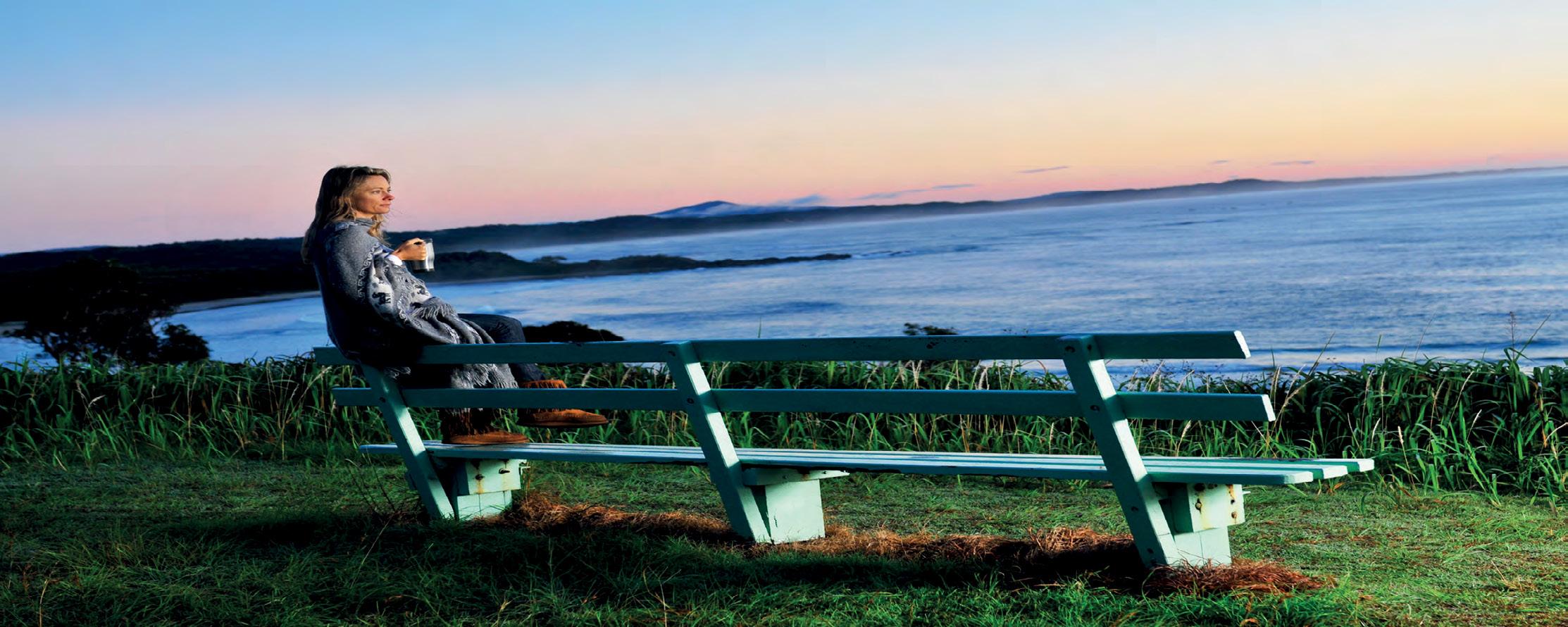
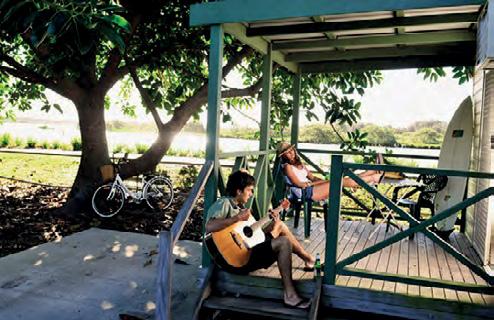
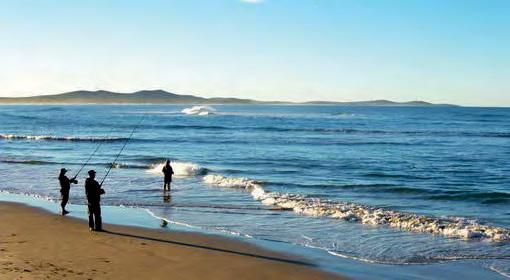













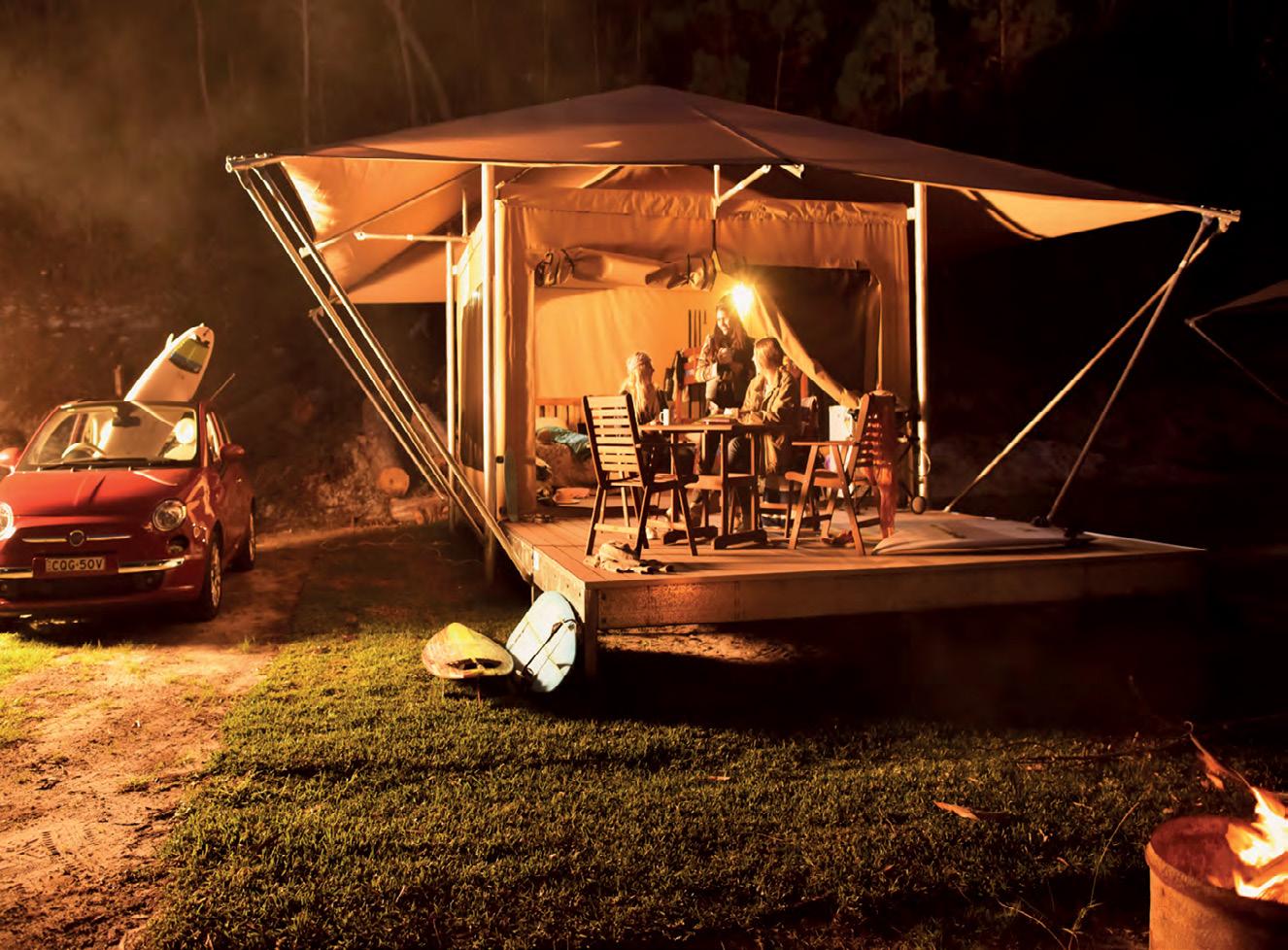
his approach to holding land managers to account and willingness to share knowledge with other staff and members of the community.
“I love working for Council. You meet a different person each day and get a good history lesson about so many places.”
But despite this he continued to lead and motivate his team of ten staff to implement the NSW Weeds Action Program (WAP) and other weed biosecurity activities.
“Tony was quite an inspirational leader for the weeds team here,” Coordinator Natural Resource Management Reece Luxton said.
Since “day dot” Darrin Heron has been on the front line protecting the Clarence Valley from invasive weeds.
The Clarence Valley Council Weeds Officer was nominated for the 2021 NSW Buerckner Local Government Weed Professional Award for outstanding contribution to the on ground control of weeds in NSW and awarded a Certificate of Acknowledgement at the NSW Weeds Conference Dinner at Albury this year.
Mr Heron started his job in 1998 as a trainee with Maclean Shire Council, then moved to Clarence Valley Weeds Authority which formed as a business unit of the Grafton, Maclean, Copmanhurst and Pristine Waters councils.
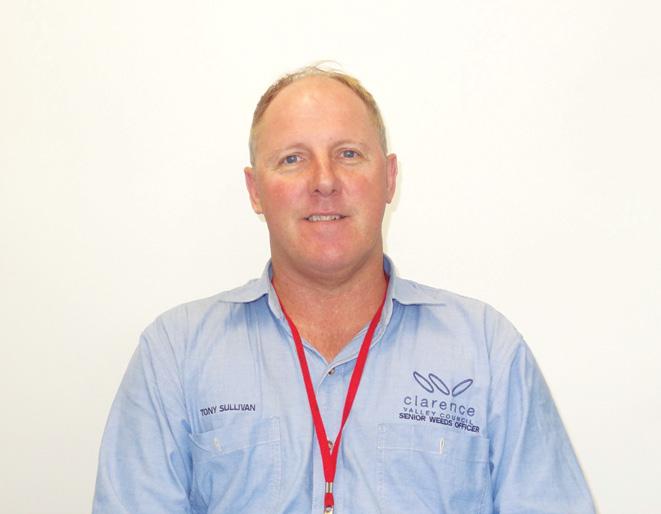

“I’ve been here since day dot,” he said. “Back in the day we used paper maps. Now all the GPS technology has made our job so much easier.”
In his role Mr Heron inspects a large area from the Lower Clarence out to Ebor for priority weeds, maps weeds infestations, encourages landholders to manage weeds and enforces priority controls under the NSW Biosecurity Act.
“Tropical soda apple is our number one weed, followed by groundsel bush, which recently flared its head again since the new highway got put in,” he said.
Some of the reasons he was nominated for the award include his ability to develop relationships with landholders and other stakeholders,
Mr Heron also mentors the Yaegl (Traditional Owner) Bush Regeneration Team. Through various projects, his actions have assisted in the development of a relationship between the Local Land Services and Traditional Owner groups.
Mr Heron is also well known in the community for his dedication to volunteer groups such as the Yaegl Men’s Group and Lower Clarence Magpies Rugby League Club.
“He not only fought off the cancer with dogged determination; he held the team together. He worked right through rounds of chemotherapy and battled on.”
In 2021 Mr Sullivan was nominated for the NSW Stephenson Local Government Weed Professional Award for outstanding contribution to planning and coordinating weed management programs in NSW and was posthumously awarded a Certificate of Acknowledgement at the NSW Weeds Conference Dinner at Albury this year.
Some of the attributes highlighted in his nomination included his keenness to assume additional responsibility, the facilitation of change and innovation, and his pleasant manner.
“The attribute that made Tony stand out above all was his love and passion for life, and unwavering commitment to his role in weed management,” Mr Luxton said.
Former Clarence Valley Council employee Tony Sullivan will be remembered for the bravery which gave his colleagues an appreciation of life.
The avid Cronulla Sharks fan worked for Council for eight years until his courageous battle with cancer ended on 2 February 2022, at the age of 54.
In 2018 Tony assumed the role of Senior Natural Resource Management Officer (Vegetation Management).
Around this same time, he received a terrible diagnosis and was given six months to live and had to have his left arm amputated.
“Despite physical pain and uncertainty about his future, Tony continued to come to work and put in 100 per cent, which made his colleagues appreciate him and their own lives all the more.”
Mr Sullivan used his knowledge in integrated weed management principles to successfully obtain grants for a range of activities funded through Council, the NSW Department of Primary Industries, North Coast Local Land Services, the Crown Reserves Improvement Fund, and the NSW Bushfire Stimulus Fund, and contributed to the development of multiple North Coast weed management strategic plans.
Robyn Monk was unaware she would have to manage one of the biggest floods in the history of the Clarence when commencing her new role as Clarence Valley Council’s first full-time Coordinator Emergency Management and Resilience in January this year.
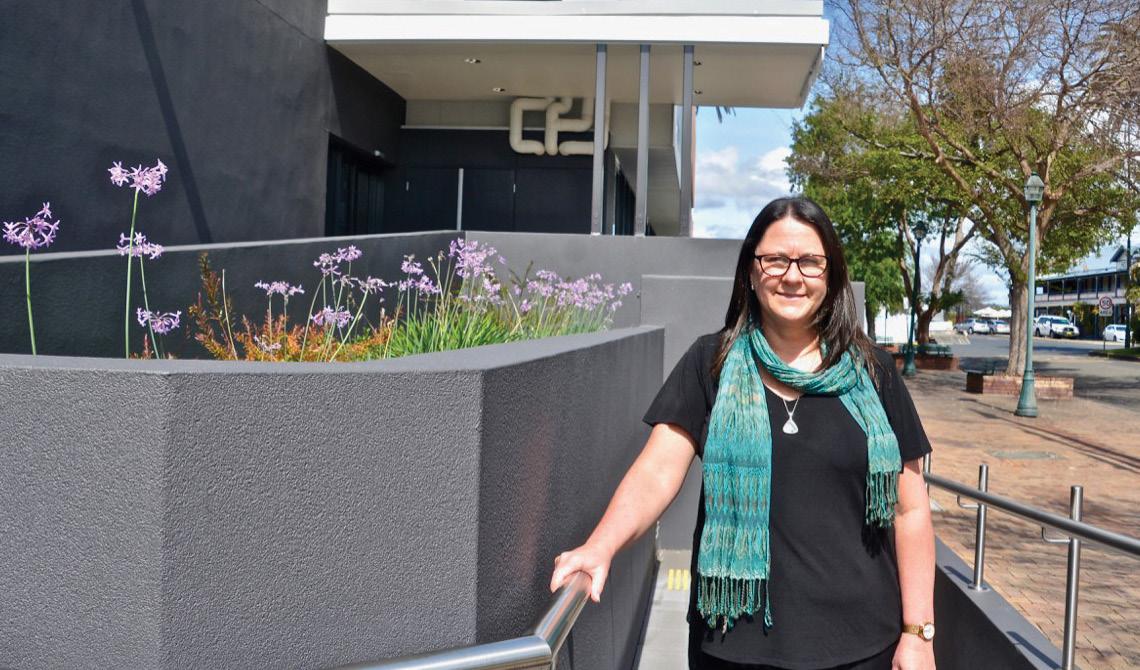
On the 23 February, Robyn received the first of many warnings from the Bureau of Meteorology (BoM) signalling the onset of a weather event that would deliver extreme multi-day rainfall and flooding to eastern New South Wales. Within 24 hrs of the initial warning, the Emergency Operations Centre (EOC) was placed on standby at the request of SES as the severe weather event began to intensify.
Robyn commenced coordinating activities in preparation for a flood event such as regularly briefing Council of the unfolding situation, ensuring SES requests for sand deliveries to communities were actioned by council and ensuring alternate heavy vehicle transport routes were approved by Transport for NSW before normal routes become inaccessible.
Continuous monitoring of river gauge levels, flood monitoring cameras, BoM information and road closures were also ongoing to maintain situational awareness of the event.
On Monday, 28 February 2022, the EOC was activated to coordinate the multi-agency response required to support SES manage the consequences of both riverine and flash flooding across the Local Government Area.
As Coordinator Emergency Management & Resilience, Robyn is required to assist council to deliver the outcomes of the Disaster Resilience Framework, engage community to increase awareness and preparedness for disaster, perform the duties of Local Emergency Management Officer (LEMO) to support the Local Emergency Management Committee (LEMC) and Local Emergency Operations Controller (LEOCON) as required.
While performing the role of LEMO, Robyn is required to assist the LEOCON coordinate and monitor emergency operations which may require a coordinated multi-agency response. Headed by the LEOCON, the EOC commenced centralised coordination of activities such as activating and opening suitable evacuation centres, ensuring vulnerable facilities were evacuating, the relocation of critical resources to Maclean following an unexpected pump failure and assist Council resource activities associated with emergency levee remediation work at Maclean. As the flood peak passed and rain subsided, the EOC was stood down and the transition to recovery was commenced and communicated. This role was created as part of the Disaster Resilience Framework, an innovative project embedding a Clarence Valley specific Climate Change Impact Assessment into a framework designed to inform and guide Council activity to proactively reduce risk to infrastructure, business and community from natural hazards and their impacts. When not directly involved in the coordination of emergency response, Robyn supports the LEMC develop and review plans to manage the potential consequence of emergencies from hazards identified across the Clarence Valley Local Government Area. She also participates on the Floodplain Risk Management and Bushfire Management Committees.
Robyn comes to Clarence valley Council following a 20-year career in emergency services with NSW Ambulance and Ambulance Victoria.
I LOOK FORWARD TO ENGAGING WITH AND PROVIDING ONGOING SUPPORT TO THE CLARENCE VALLEY COMMUNITY AND COUNCIL TO MITIGATE AND/OR REDUCE THE IMPACTS OF NATURAL HAZARDS AND DEVELOP TRUE DISASTER RESILIENCE FOR THE LGA.Image above: Emergency Management Coordinator, Robyn Monk.
More than half a million hectares – 59 per cent of the Clarence Valley - was burnt by catastrophic and unprecedented bushfires between July 2019 and January 2020.
The fires directly impacted 1500 rural residents.
Following the fires, community feedback identified a priority for better understanding the stages of recovery for wellbeing, reconnecting with nature and future fire preparedness.
From this, the Resilient Clarence Project was created to work with the most severely impacted communities of Ashby, Baryulgil, Dundurrabin, Ewingar, Glenreagh, Iluka, Malabugilmah, Nymboida, Wooloweyah and Woombah, in partnership with agencies to enable better delivery of programs in target communities.
Red Cross was engaged to empower rural communities to better prepare for future disasters through the Red Cross’ award-winning Community Resilience Teams model. Communities have been supported to build the skills, knowledge, resources, and connections that they need to successfully navigate through all
stages of the disaster cycle: before, during and after an event.
St Vincent’s de Paul, Vinnies as they are affectionally known, have been supporting and training residents in Dundurrabin, Nymboida and Ewingar. They have facilitated a range of practical TAFE courses for community members including Chainsaw Cut and Trim courses for Women, Tree Felling, Chemical Handling and a few special requests such as Farm Fencing and Safe Food Handling.
Resilient Clarence is working with Envite and Clarence Landcare to help bushfire affected communities reconnect with nature and heal the scars the fires etched into the landscape.
Envite has worked in Malabugilmah to deliver an Aboriginal Leadership Bush Regeneration Program and with Yaegl youth to connect and Heal Country at a walk and talk on cool burning.
Landcare has run a range of school programs and they have also run an Environmental DNA program to determine what animals are present in the environment post fire with eDNA samples being collected from Nymboida and Dundurrabin. The results of the program were made public at the Monitoring Environmental Change workshops in September.
Another highlight of the Landcare program was the Canine for Wildlife
workshop held in Ashby. Max, a wildlife detection dog demonstrated just how easy it is for him to locate koalas much to the delight of workshop participants.
Our partnership with Blanc Space is collecting fire stories from across the Clarence Valley. Stories which will sit on a digital map and be available for everyone.
The Resilient Clarence illustration pictured above, shows what harvesting stories looks like and was created at one of our community leader workshops.

The most important goal of Resilient Clarence has been to connect communities and ensure community members are prepared for disasters, no matter what they look like. Bringing activities out to the communities are connecting people and helping them to create Preparedness Plans.
If you would like to know more and keep up to date with the Resilient Clarence Project and the stories from the fire affected communities please sign up to our newsletter www.clarence.nsw.gov.au/ ResilienceNews
Image above (L-R): Community members gather at Maclean showground to say thank you to emergency service agencies.
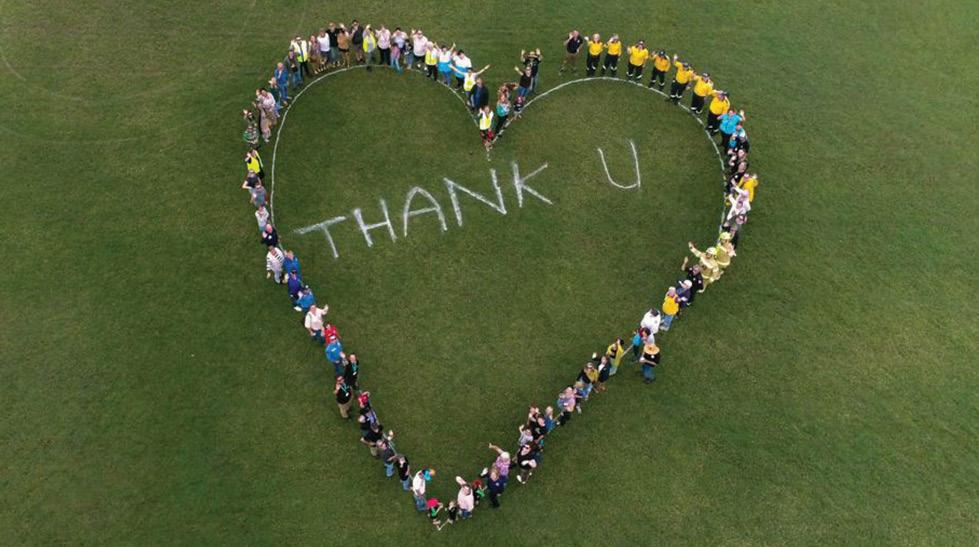
A physical fitness program focusing on building mental and physical stability, is providing mentoring and peer support to young people in the Clarence Valley.
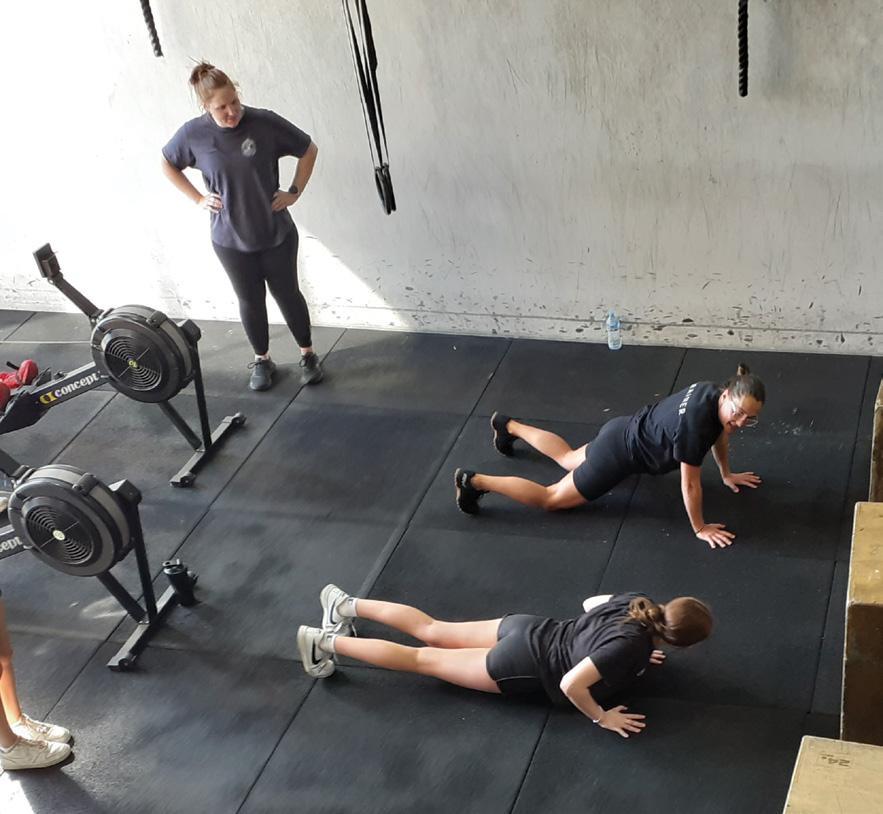
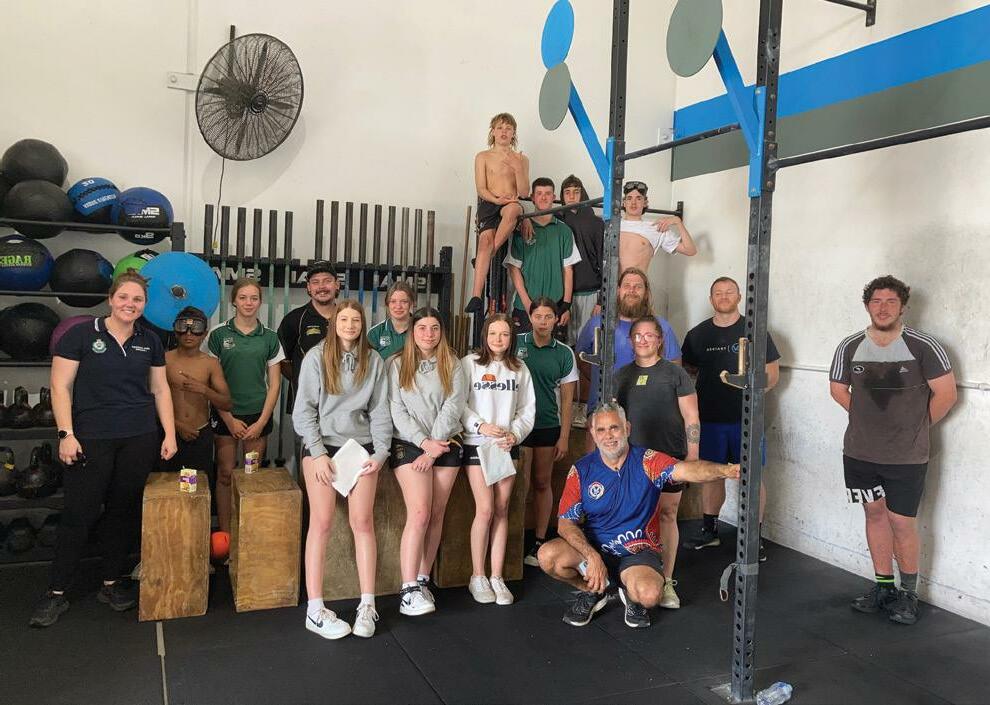
Clarence Valley Council is partnering with The Alcohol and Drug Foundation (ADF) to work with Local Drug Action Teams (LDAT) to develop and deliver evidencebased activities at a community level.
Clarence Valley’s LDAT, is a made up of a group of organisations, including NSW Police Force, New School of Arts, Changing Lanes, Momentum Collective, Headspace and Social Futures, who have formed a collaboration to address alcohol and other drug issues in the valley.
Recent consultation with community leaders, police and service providers identified an ongoing local issue where a cohort of young people were frequently engaging in risky behaviour when influenced by alcohol and cannabis in the lower river area.
The LDAT successfully applied for grant funding from the ADF to fund a fitness program.
Up to 12 young people aged between 14 and 17 years have been consistently attending the ten-week program which provides information from partner organisations to increase their knowledge around the effects of alcohol and drug use. Different topics are discussed each week with relevant partner support services attending sessions to provide information.
Senior Constable Jess Stamper (Coffs Clarence LAC, Youth Officer) has advised that she is impressed with the attitude and effort displayed by the participants.
“I believe in the importance of building resilience, both physical and mental in young people and hope this will increase their ability to understand stress and to use healthy lifestyle strategies to better manage, whether that’s at school or in the community with peers and friends,” Snr Constable Stamper said.
“The mentoring aspect of the program provides positive connection to services and community that can help young people to make healthier choices.”
“Coming to the high intensity interval training gets me up and active, I have a good time working out and catching up with everyone after the workout. Afterwards I feel better about myself, and I’m motivated to get through the
rest of the week,” one of the participants said.
Another young person participating in the sessions said that the program, “Keeps me fit for footy season and keeps me busy during the week”.
Engaging young people in healthy lifestyle activities can have both physical and mental health benefits as one of the young people identified, “We really have a good workout, like proper sweat and pain and then have a laugh about it afterwards, yeah, its good”.
Another young person has decided to give up vaping because of the program and was able to have meaningful discussions with the mentors and this supported their decision to quit.
Images above: LDAT CrossFit program in action. Opp. page: Allira enjoys an activity with Clarence youth at Live’ n Loud
Allira Newton has been working at Clarence Valley Council for almost five years and is passionate about supporting youth in the Valley and creating opportunities that meet their needs.
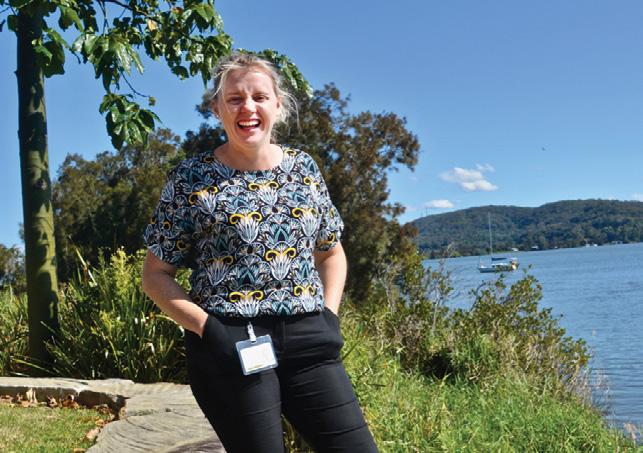
The youth programs support young people in the community through youth drop-ins, school holiday activities, youth week celebrations, community events and playgroups.

“My role as Clarence Valley Council Youth Officer has a strong focus on building strong community connections and is often the conduit that connects services, young people, and community groups in our region,” Allira said.
“I am full-time at CVC and the role is fully funded by the Department of Communities and Justice – through the Targeted Earlier Intervention program.”
“The motto ‘more hands make light work’ underpins my work as youth officer, as community work couldn’t happen without many hands working together to create strong connected communities.”
Council’s programs aim to be collaborative and inclusive. Council coordinates the Clarence Youth Network (CYN), who meet each month. The CYN’s aim is to bring agencies and community together to collectively share information, promote services and resources, collaborate on projects, encourage youth and community participation, and work on a coordinated approach to raise awareness of and address local youth issues and opportunities.
“I am passionate about supporting local young people, community groups and services to run programs and activities that complement their own unique community needs,” Allira said.
“The best part of being Council’s Youth Officer is being out and about connecting with community. It is great meeting knew people and supporting events and programs that contribute to young people feeling connected, valued, and heard in the community. There is nothing better than a competitive game of handball or jenga, connecting with young people by participating in the activities they enjoy is so much fun and a rewarding part of the Youth Officer role.”
Each year the CVC youth program facilitates four school holiday programs with support of various services and contractors. This program aims to reach as many of our smaller communities as possible. Follow our socials to stay connected to what is happening during school holidays. Council facilitates Youth Week celebrations in April each year. 2022 was a massive celebration for our young people and we had over 800 youth, community and families attend our events over the ten days.
“In the next few months, we will be getting out in community and having conversations with local young people about the types of events they would like to see happening in April 2023,” Allira said.
“We are always on the lookout for opportunities to do more for local youth, so applying for grant funding and brainstorming new possibilities is a big part of my role as well. In the next 12 months we hope to develop a youth advisory group for CVC so that young people have a strong voice in the council space.”
THE BEST PART OF BEING COUNCIL’S YOUTH OFFICER IS BEING OUT AND ABOUT CONNECTING WITH COMMUNITY

They are greeting visitors to the region every day at the Visitor Information Centre located at the Regional Gallery in Grafton, as well as working hard behind the scenes in promoting the region to future visitors.
The team hosted a highly successful Destination North Coast Tourism Symposium attended by 120 tourism advocates and representatives from across the East Coast in July. The day and night networking event showcased the delights of the Clarence Valley to spread the word about the benefits of visiting the region.
As part of the symposium, awards were presented to Local Heroes and the team are pictured with Clarence Distillery owner Adam Freeman whose business won the award for the Valley.
During Jacaranda Season the tourism team may greet up to 100 people per day at the Visitor Information Centre, handing out sample bags and brochures and giving advice on where to have the best time whilst visiting. And let’s face it there is a lot of fun to be had here in the Clarence Valley.
Did you know they also run the brand My Clarence Valley on social media within the team? The team compiles posts twice daily and engages with their ever-growing followers (now up to nearly 35,000 on Facebook).
You may have seen the post about the tree of life in Brooms Head? The one that went viral all around the world. Yes, that was a post which was started by My Clarence Valley Post.
It earned them the recent Social Butterfly Award at the Grafton Chamber of Commerce Spring Gala business awards - well done team.
The content for social media is sourced through searching the big wide world of the net. This is to ensure the team finds the best possible pictures or videos from visitors or locals that are passionate about capturing this beautiful region. So, tagging the team via #myclarencevalley may get you on the social channels and re-shared around the world. You never know.
On the subject of content writing, it’s worth noting the team also lists Clarence Valley businesses on the My Clarence Valley website and other tourism related sites such as Visit NSW. This is done via a portal called the Australian Tourism Data Warehouse (short ATDW), which the team access daily, updating content as well as creating new listings.
And that’s not all. Another big part of the job is managing brochures and destination flyers. The team update them with current information and fill up the Tourism hubs with more stock. Did you know you can grab a brochure at the Library in Grafton, Ferry Park Maclean, the Maclean Council building as well as the Regional Gallery in Grafton?
Image above: The My Clarence Valley team present a Local Tourism Hero award at Clarence Distillery.
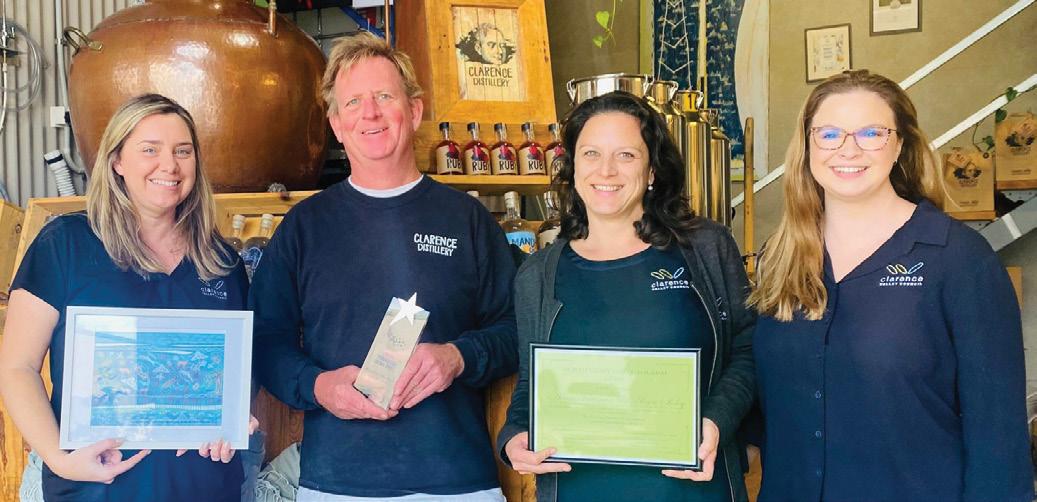
So do yourself a favour and pop into the Visitor Information Centre (open 6 days a week). Or if you would prefer, pick up the phone and have a chat, we are available seven days a week on 02 6643 0800 There will be a friendly voice at the other end, that’s a guarantee!
1. Browsing the Jacaranda trees of Grafton
2. Heritage trail of Grafton – pick a few buildings plus bridge walk (loop of both bridges)
3. Visit to the Regional Gallery of Grafton – coffee stop at Rubony’s
4. Lunch at Ulmarra Hotel (perhaps on the way up north if going in that direction)
5. Maclean town stop – just a walk through the main street plus a coffee stop. The drive in from highway past the river is a nice way to introduce Maclean then perhaps a stop at Sanctus for an afternoon beverage
6. Yamba: stay at Yamba Surf – they have 12 rooms, dinner at Karrikin set menu will suit group scenario or Sandbar which is walking distance to Yamba Surf
7. Yamba beaches – a drive around on what locals call surf check to show off all the beautiful beaches - drive over to Angourie to grab a coffee – head over to beginning of the Yuraygir Coastal Walk and perhaps do a little walk – then turn around as this walk is 10km return
8. Lunch at Pacific Hotel for views – book table at window
9. Head up the hill to Yamba Pilot Hill , combine with walk out to breakwall
10. Visit to Clarence Distillery and Wobbly Chook for a taster (local brew)
Did you know the Clarence Valley has four libraries and one mobile library servicing the area?
libraries are so much more than just books
offer services such as:
what to read next suggestions
tech help one on one and small group sessions
www.crl.nsw.gov.au or follow us on facebook and instagram
Community is at the heart of the Gallery Store, where it’s about creativity and discovery, and goes beyond just souvenirs.
If you are looking for a special gift this Christmas why not pick up new-season Elk clothing and accessories, flick through coffee table books and exhibition catalogues, discover local hand made ceramics or stock up on delicious small goods at The Gallery Store at Grafton Regional Gallery. Built in 1880, the historic Prentice House once served as a surgery and doctor’s residence until its conversion in 1986 to a gallery. Purchased in 1985 by Clarence Valley Council (CVC), and after the latest 2020 renovation, the Gallery Store now resides in East Prentice House; located on your right as you enter through the Gallery doors. Operationally managed by Avron Thompson and supported by the Gallery Director Niomi Sands and her team, the Gallery Store looks forward to engaging with their customers face-to-face as the retail space has grown into an extension of the heritage building’s approach. It’s a modern take on the standard Gallery gift store, with vintage details and feminine flair. “It’s a beautiful old building,” says Sands. “It’s got a lot of natural light and beautiful flow through the entry and exit to the main gallery that we’ve worked with.”
The Gallery store is proud to support local artisans by selling their ceramics, jewellery and homewares as well as wholly owned and created products, art and books from Bundjalung, Gumbaynggirr and Yaegl Nations.

Discover unique pieces by renowned artists as Catherine Lane, Frances Bell Parker, Cass Samms, Geoff Crispin. Stock up the pantry with Bakarindi Bush Food, Nicholson Fine Food sauces and oils, and pure, local Heavenly Honey. Encourage sustainability and discovery in little people with gifts and toys by Ecokids, Dodoland, and One Happy Leaf. End your visit to the Gallery with a bespoke Grafton fine china mug by Rochelle Summerfield or start your Jacaranda souvenir collection with a purple umbrella.
The Gallery Store is two blocks back from the city centre on Prince Street and within accessible distance from the Grafton CBD.
THE GALLERY STORE AT GRG on Bundjalung Country 158 Fitzroy Street Grafton 2460 Hours: Tuesdays to Sundays 10am–4pm
Closed Public Holidays Follow The Gallery Store on Instagram at @grafton_regional_gallery for new pieces, sale updates and restock alerts. For all other queries including wholesale accts, please email gallery@clarence.nsw.gov.au
Events that attract visitors to the Clarence Valley and bring people together to celebrate our community are important to Council.
The Special Event Sponsorship and Sports Tourism programs provide sponsorship to event organisers and Council supports these programs with a combined budget of approximately $130,000 annually. We congratulate all our event organisers who produce these popular events. The Clarence Valley would not be the same without you or the events.
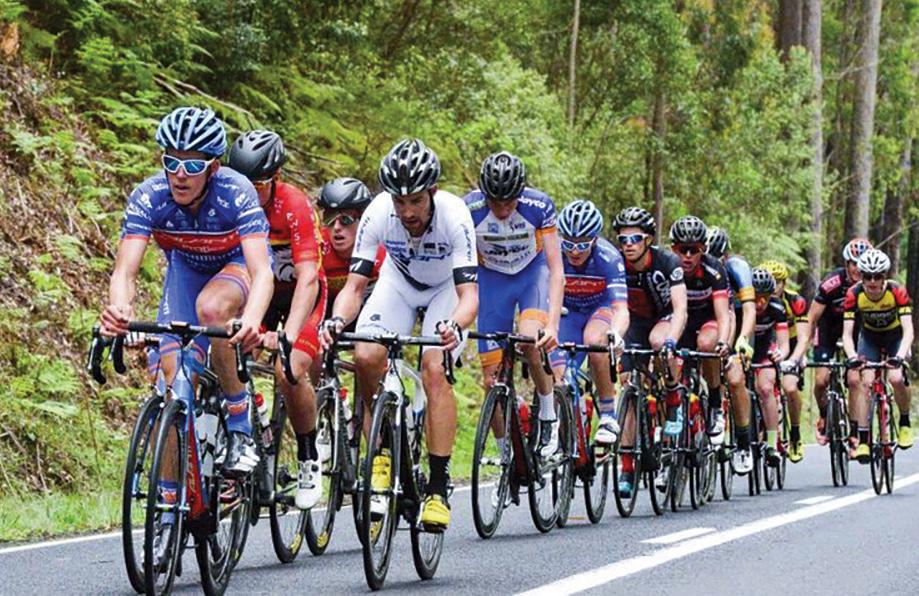
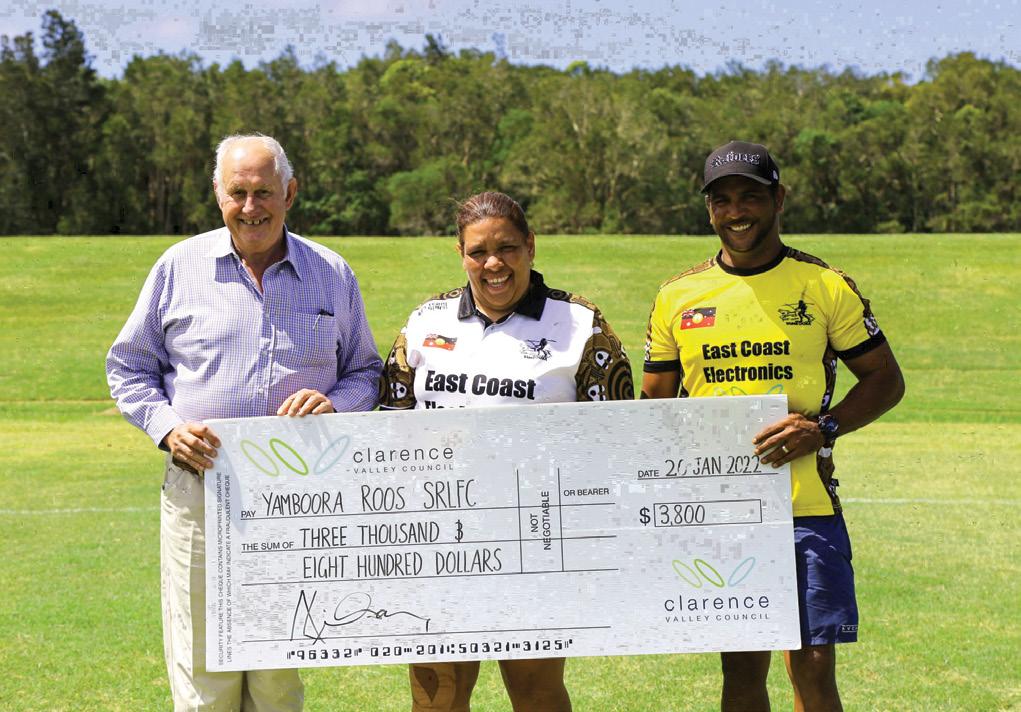
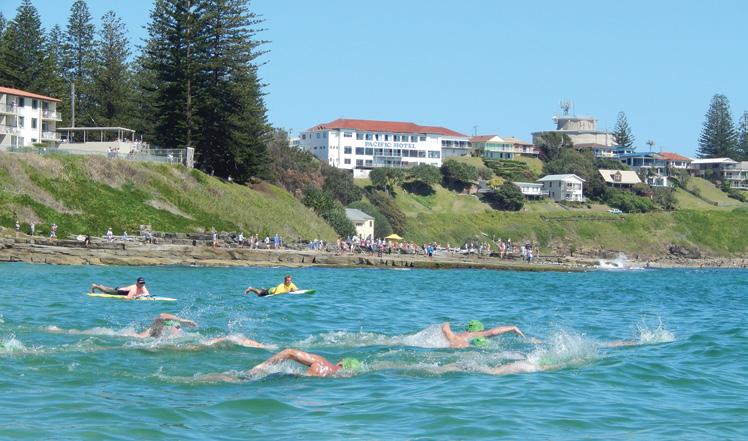
Each year, the events sponsored through these programs, attract visitors who spend money in our local businesses, either when they buy food at local cafes, restaurants and farmers markets, accommodation at local hotels and motels, services such as hairdressers or bike hire, and of course retail when they pop in for a bit of shopping.
Often first-time visitors who are attracted to the Clarence because of the event, usually want to return with other friends or family for another holiday – because it’s such a great place to visit.
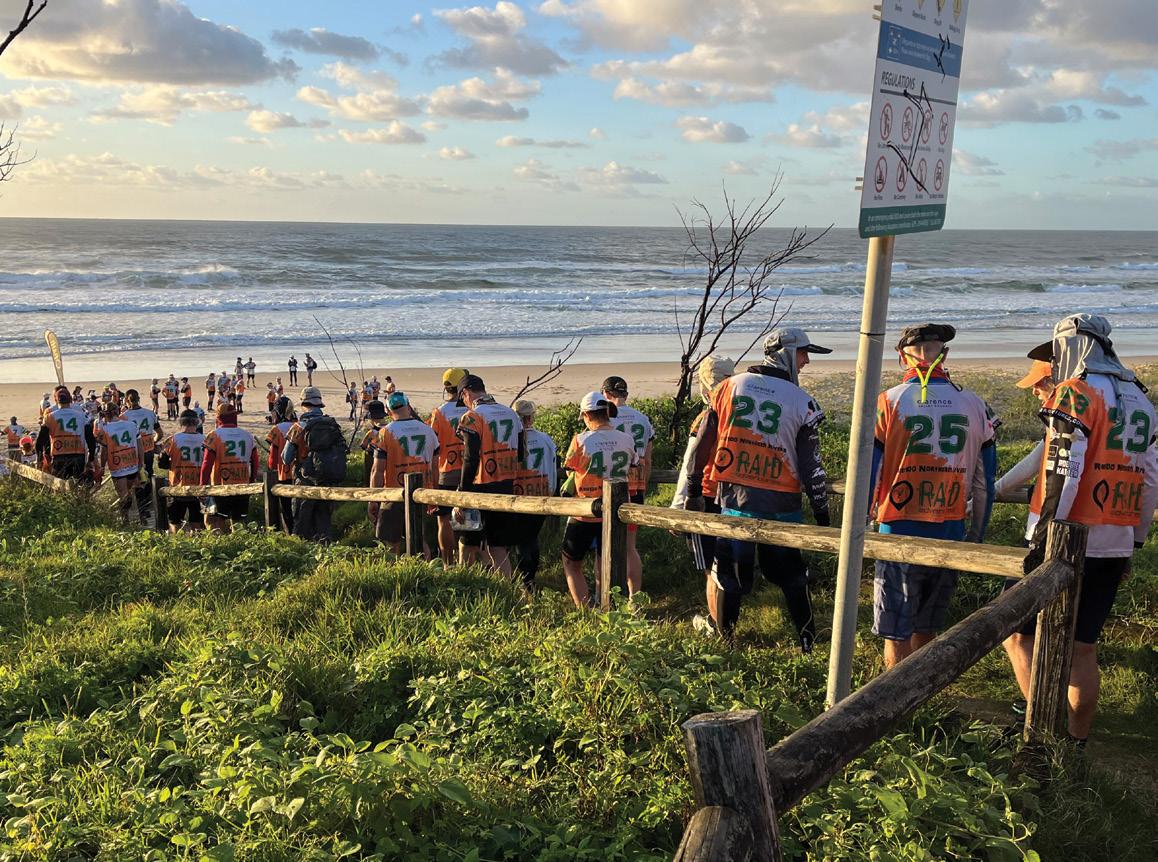
Illuminate See Park will happen for the second time during Jacaranda Season from 20 October to 10 November this year.
All the jacaranda trees that line the perimeter of Grafton’s See Park and several colourful trees inside will be illuminated.
The evening atmosphere in the park is unique. It’s joyful in a subtle and unexpected way. Strolling around the park, viewing the reflections in the transformed pond, is peaceful and somehow elegant. Live acoustic music wafting across the park provides the perfect background.
The illumination of the See Park jacaranda trees is a Clarence Valley Council project, funded through the Australian Government. The unique project is about celebrating the trees in a new way, transforming what is a daytime joy into an evening spectacular.
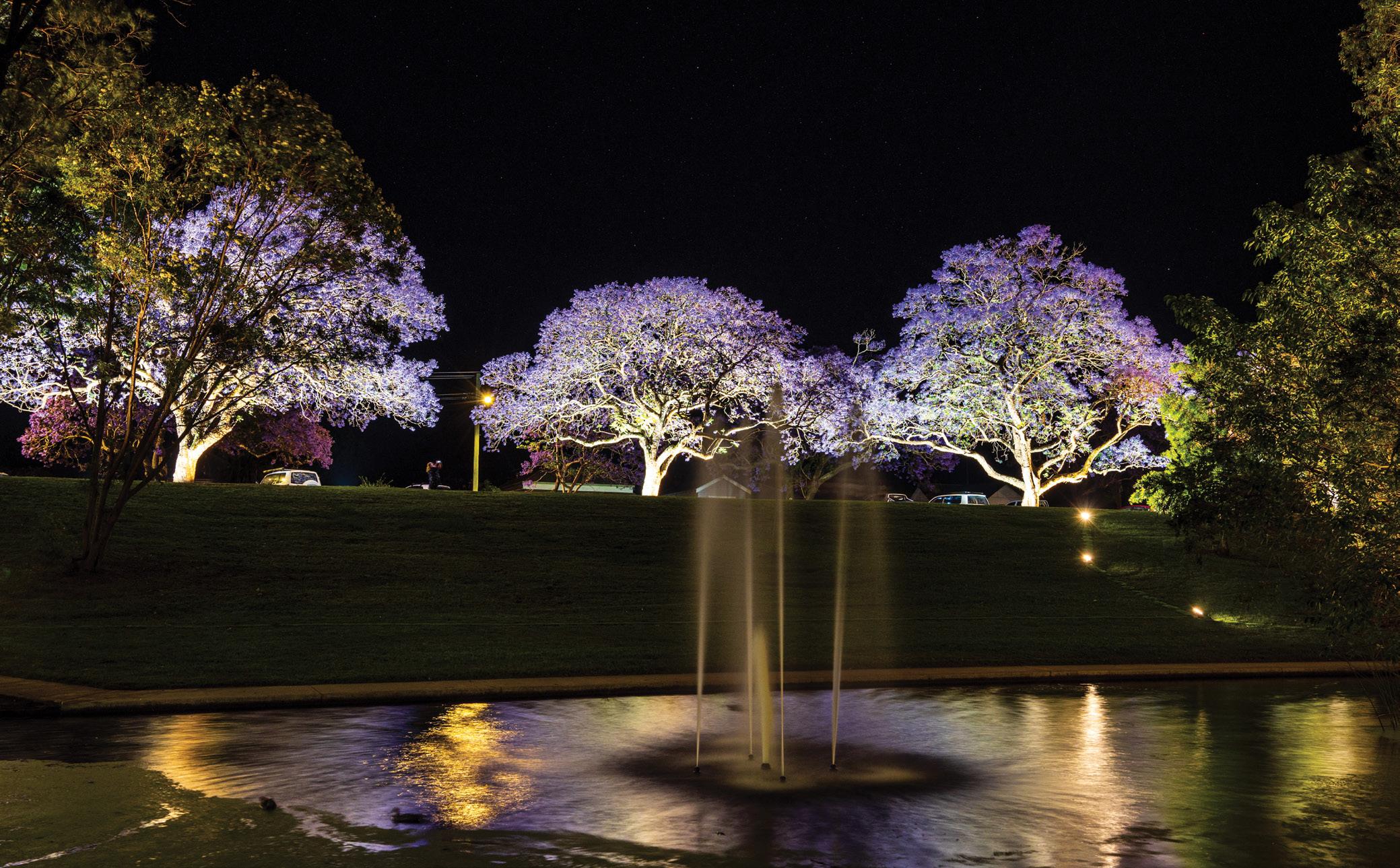
The project’s aim was to create a unique space that encourages visitors to explore See Park after dark. This means more visitors staying overnight in the Clarence Valley, providing a boost to local businesses via the Visitor Economy.
It’s also somewhere residents can go with their visiting friends and family, to show off Grafton’s beauty. It’s great
for a twilight picnic or evening meander. Summertime Electrical, a local company, were successful in their tender to install the lighting. They did a fantastic job in 2021 and are eager to do the same for the next two years of their contract. The lighting is temporary, in order to meet the appropriate Australian Standards for up lighting, which takes into consideration light pollution during the night-time. The temporary lighting also gives the flexibility to the placement of the lights, in case trees lose branches or other changes occur.
The Jacaranda Festival Committee will host different events during each weekend of illuminate this year, with the opening night on Thursday 20 October. Imagine live music, food trucks and possibly some performances around the pond.
For more information about the whole of Jacaranda Season visit myclarencevalley.com/jacaranda Funded through the Federal Governments Australian Bushfire Recovery Initiative with the aim of reinvigorating communities affected by the 201920 bushfires it is the first time a project such as this has been seen in the Clarence Valley.


